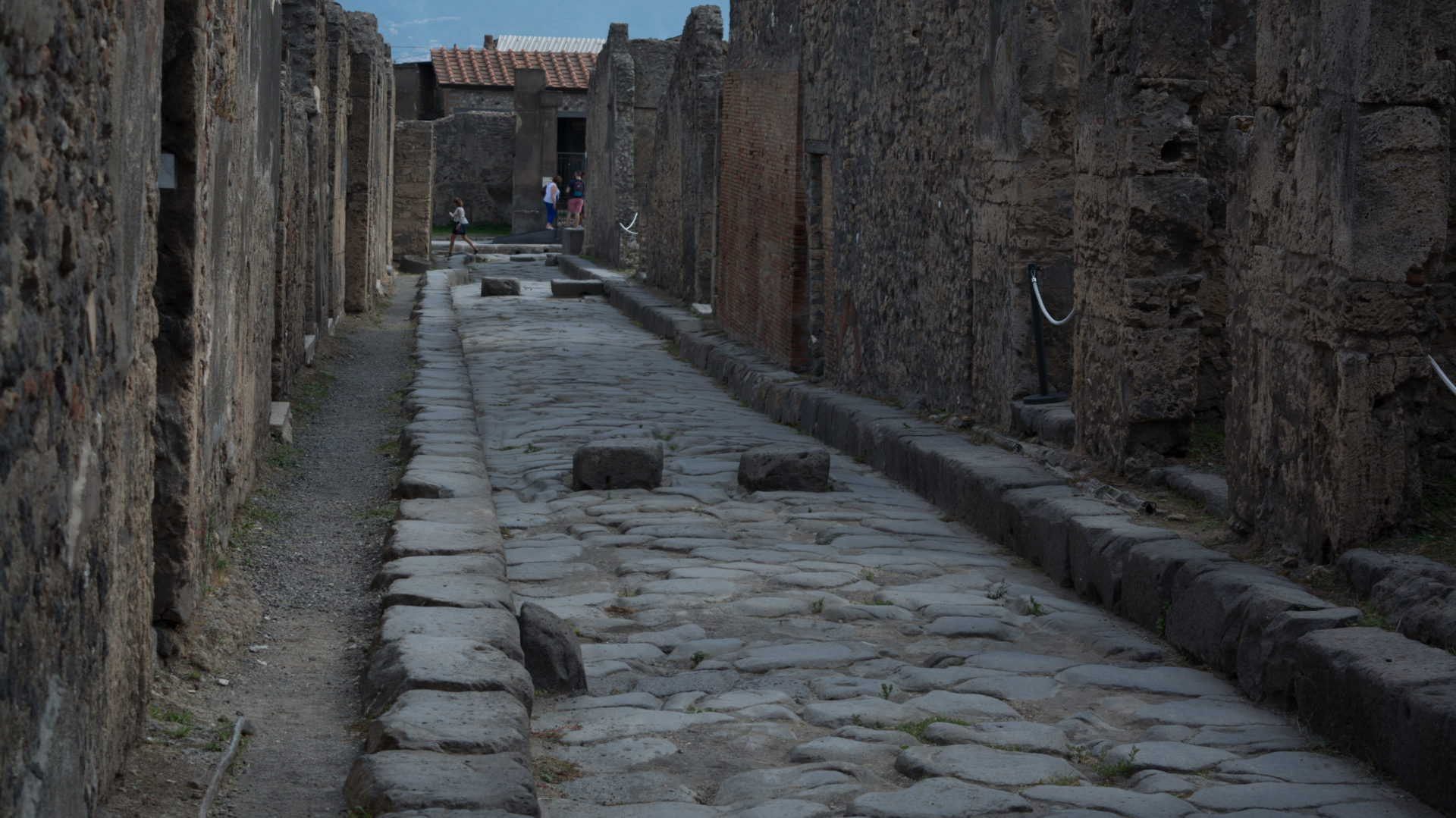After finishing up at the DDR museum, I started making my way by train and bus to a small local museum called Alexanderhaus. This small home was the subject of a book published several years ago, called “The House by the Lake.” The author of the book came across the house while doing family history research. His grandmother’s family, the Alexanders, lived here in the 1930s. As the events of the 20th Century played out, the house became a microcosm of the history of wider Germany. As I write the remaining posts for this trip I will continue to tie events back to the five families who lived in this house, and how the events affected them personally.
The book is thoroughly researched and magnificently written, and is very highly recommended. But to provide a brief synopsis of the timeline, the land in this area was purchased in the late 1800s by a retired cavalryman aspiring to become a member of the old German nobility named Otto von Wollank. Otto would eventually sell off small parcels of this land to be used for small cottages and summer homes. In 1927 one of these parcels was bought by a prominent Jewish family doctor named Alfred Alexander. His daughter, Elsie, is the author’s grandmother. Dr Alexander built the home that still sits on the site, and used the area as a weekend and summer retreat for his family. Dr Alexander was one of the most respected physicians in Berlin, and his patients included professor Albert Einstein, among many other of Berlin’s most illustrious personalities.
The Alexanders fled the country in 1936 when Alfred got word that the Gestapo were planning to arrest him. The next person to live in the house, Will Meisel, was a dues-paying member of the Nazi party who wrote and published music under the Third Reich. He fled the area in 1945 when the end of the war brought the Soviets into the area. The house would later belong to a man named Wolfgang Kuhne and his family. Wolfgang Kuhne would serve as an informer for the Stasi, the communist secret police. When the Berlin Wall went up it went directly through the backyard of the house, cutting the occupants off from the lake. On the night of November 9th 1989, when the Wall finally came down, Mr. Kuhne and his grandson used sledgehammers to smash their way through the wall and reach their long-lost lakefront on the other side.
The house would eventually fall into disrepair, and in 2013 it was planned to be demolished. But Mr Harding, the book’s author, saved the house and created a nonprofit organization dedicated to restoring it to its 1927 condition, just as his grandmother would have remembered it. Today the house functions as a museum. A website has been created for the house as well: alexanderhaus.org
After spending nearly an hour on public transit I finally arrived at the Potsdamer Tor, the gate that marks the entrance to the local town. This gate features prominently in the book, as the keystone once bore the Wollank family seal. It was chiseled off by Soviet soldiers at the end of World War II (you can see the chisel marks in the photo below). This is also where East German border guards would have checked passports and papers during the days of the Berlin Wall:
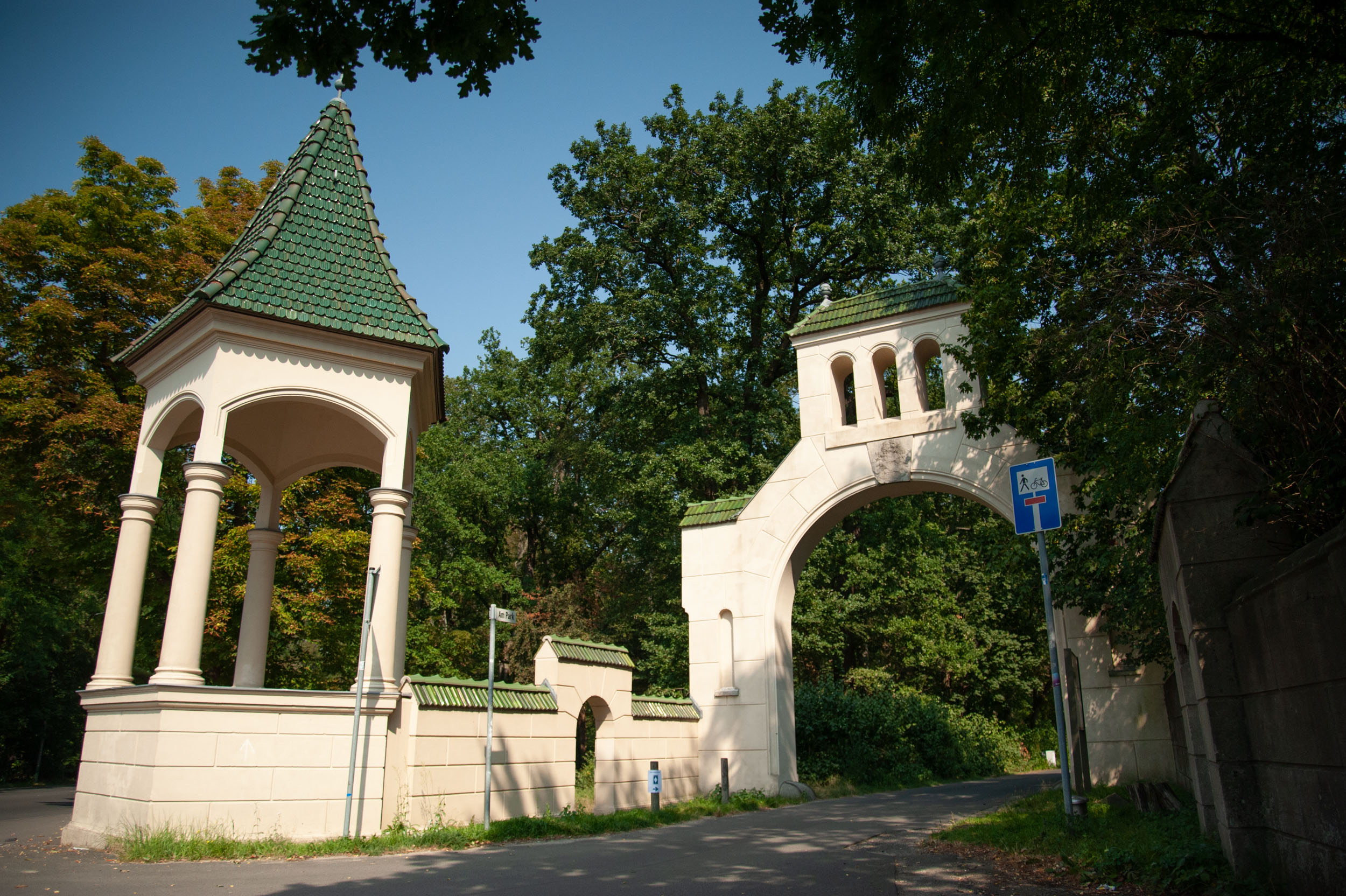
These small signs directed visitors to the front of the property:
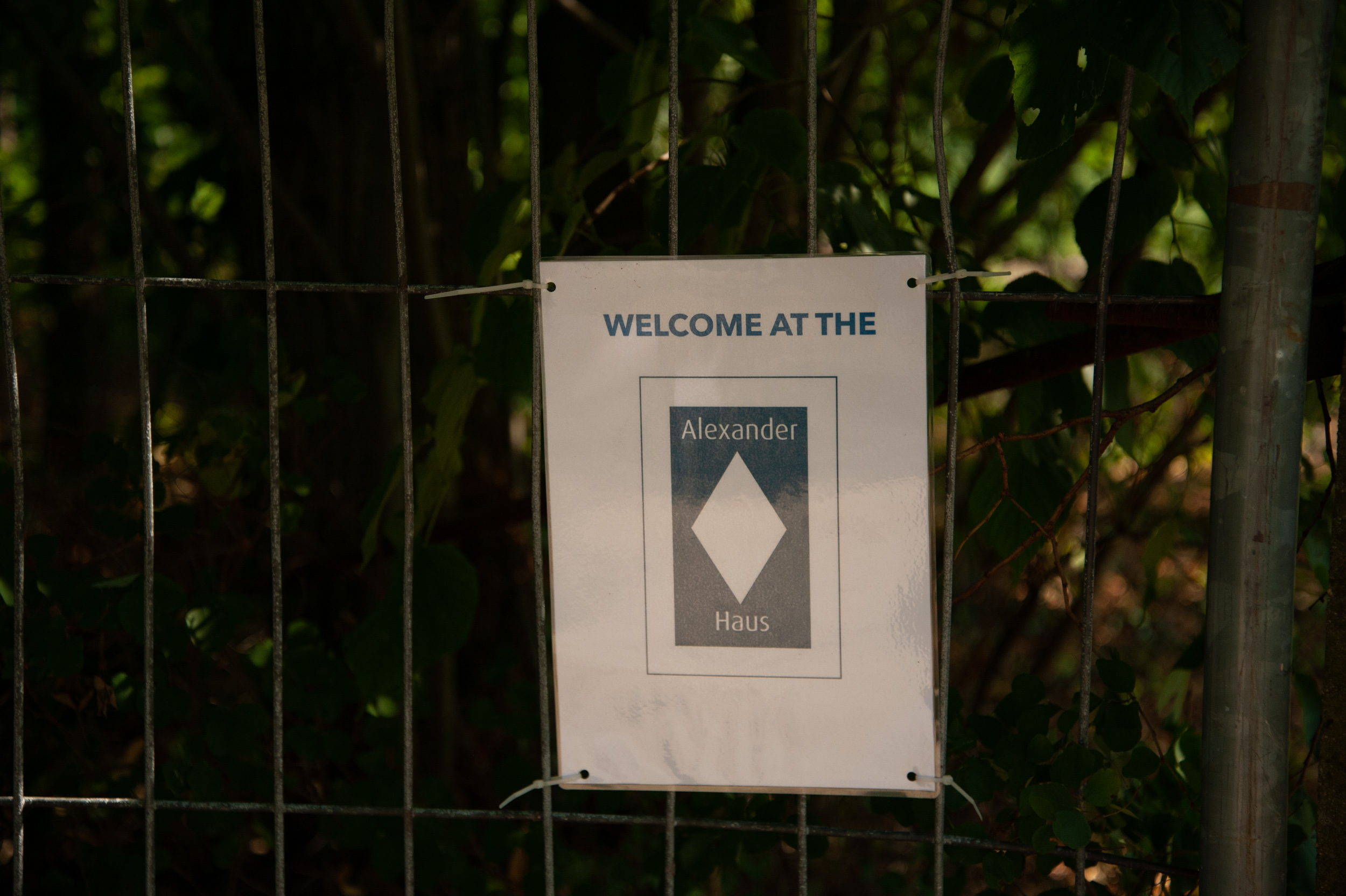
Tour guides arrived to let us into the property, tell us about the house, and answer our questions. Here is my first look at the front door of the house:
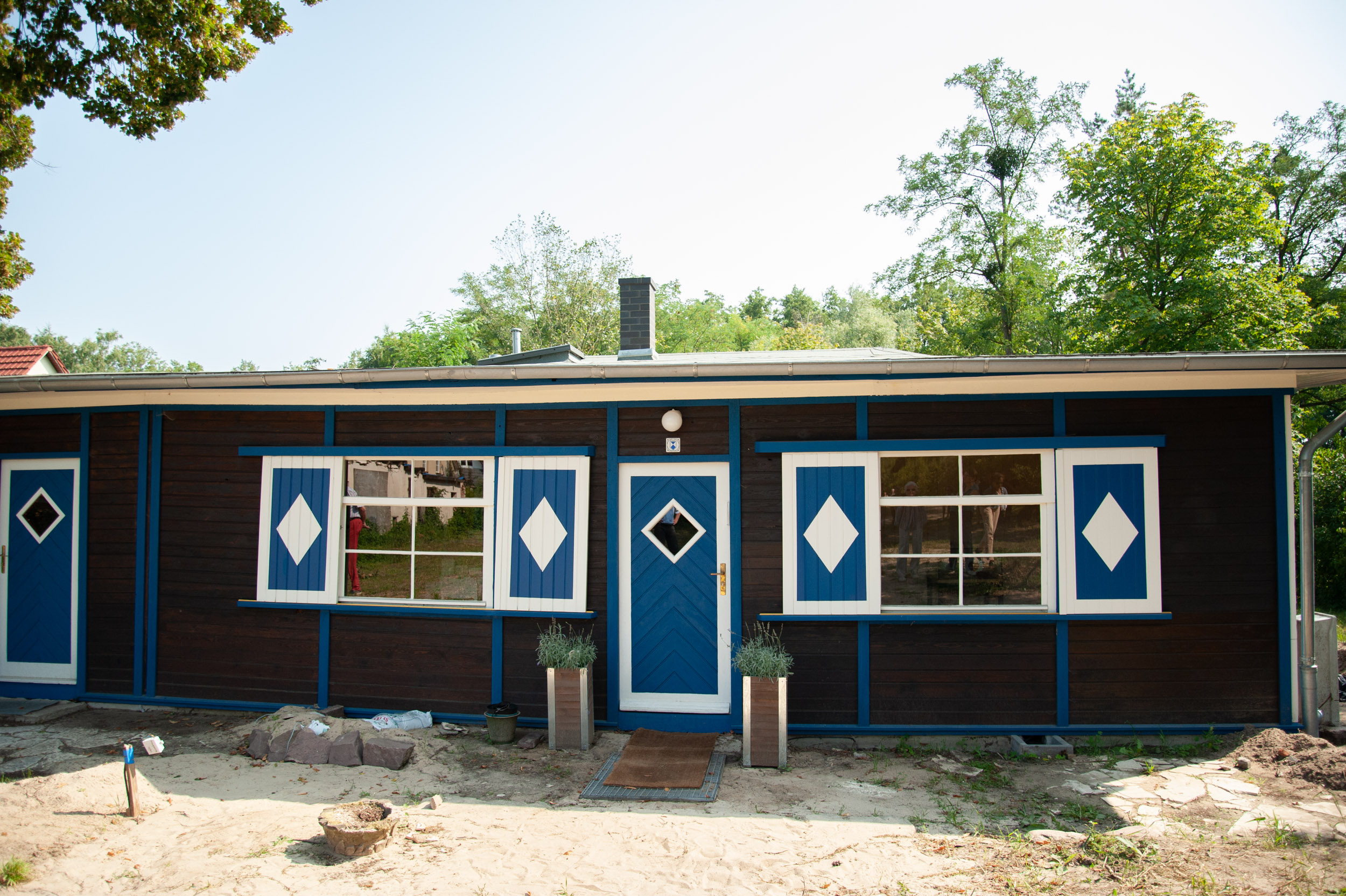
These 36 Delft tiles, set into the fireplace in the living room, were collected by Dr Alexander on his travels through Belgium. They are featured several times in the book, so I was excited to finally have the chance to see them in person:
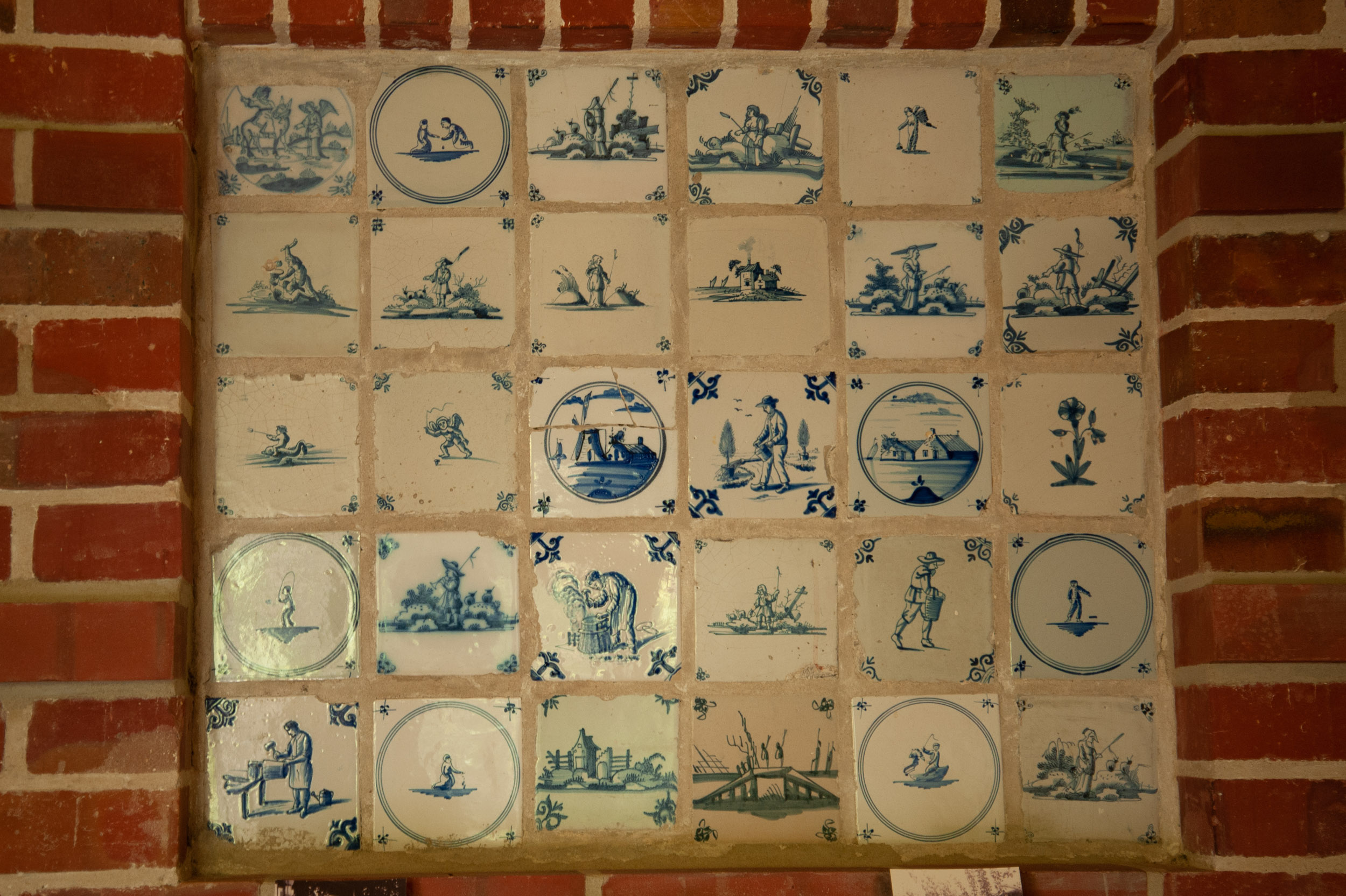
Here is a shot of the whole fireplace:
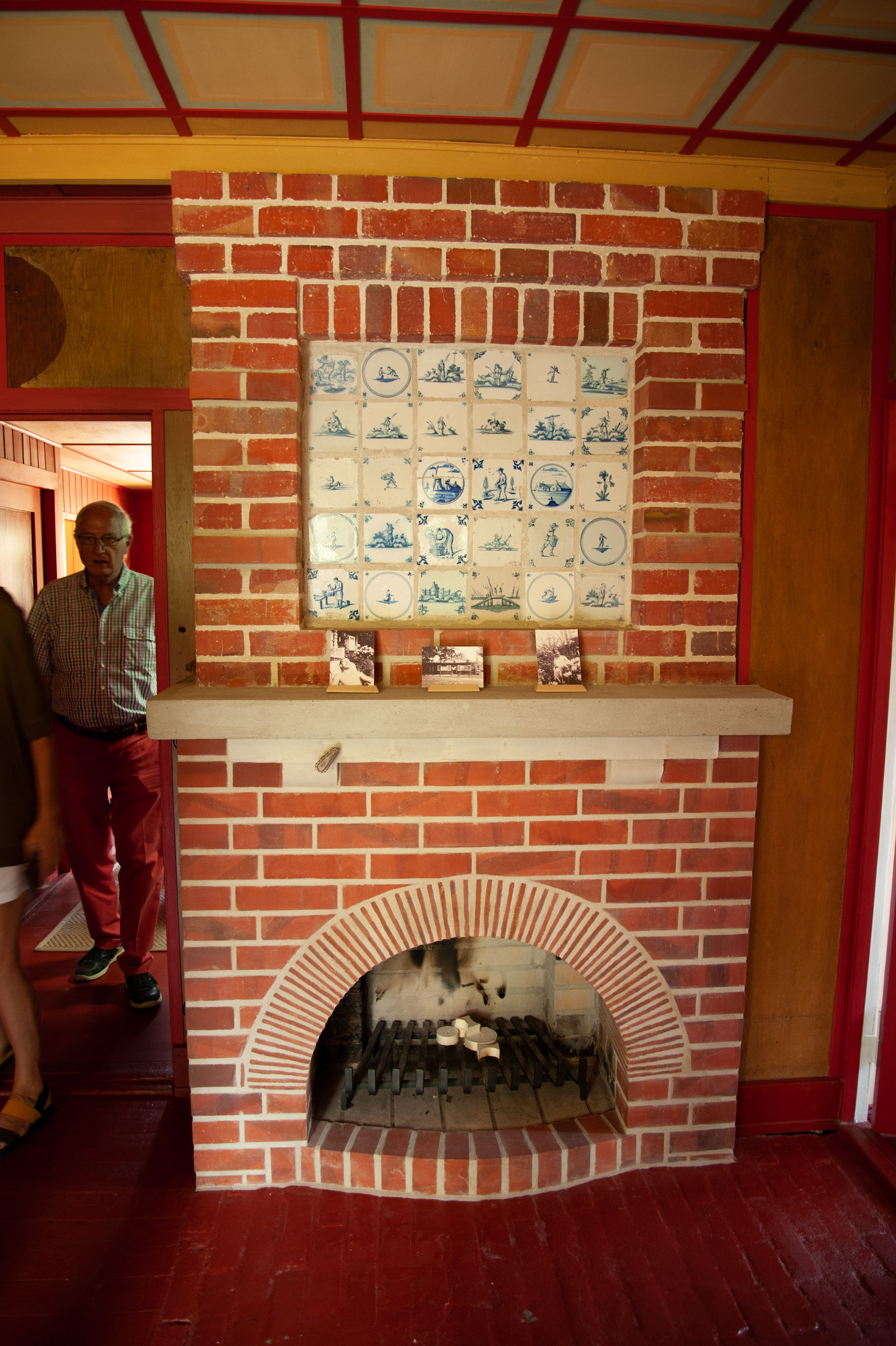
The first room that I visited was the Blue Room. When the Alexanders lived here, this room was used as the girls’ room. Young Elsie would have slept here. Will Meisel used it to house his piano and his music, and he did some of his writing here. The piano is not original, but the poster is for a stage performance whose music was written by Mr. Meisel:
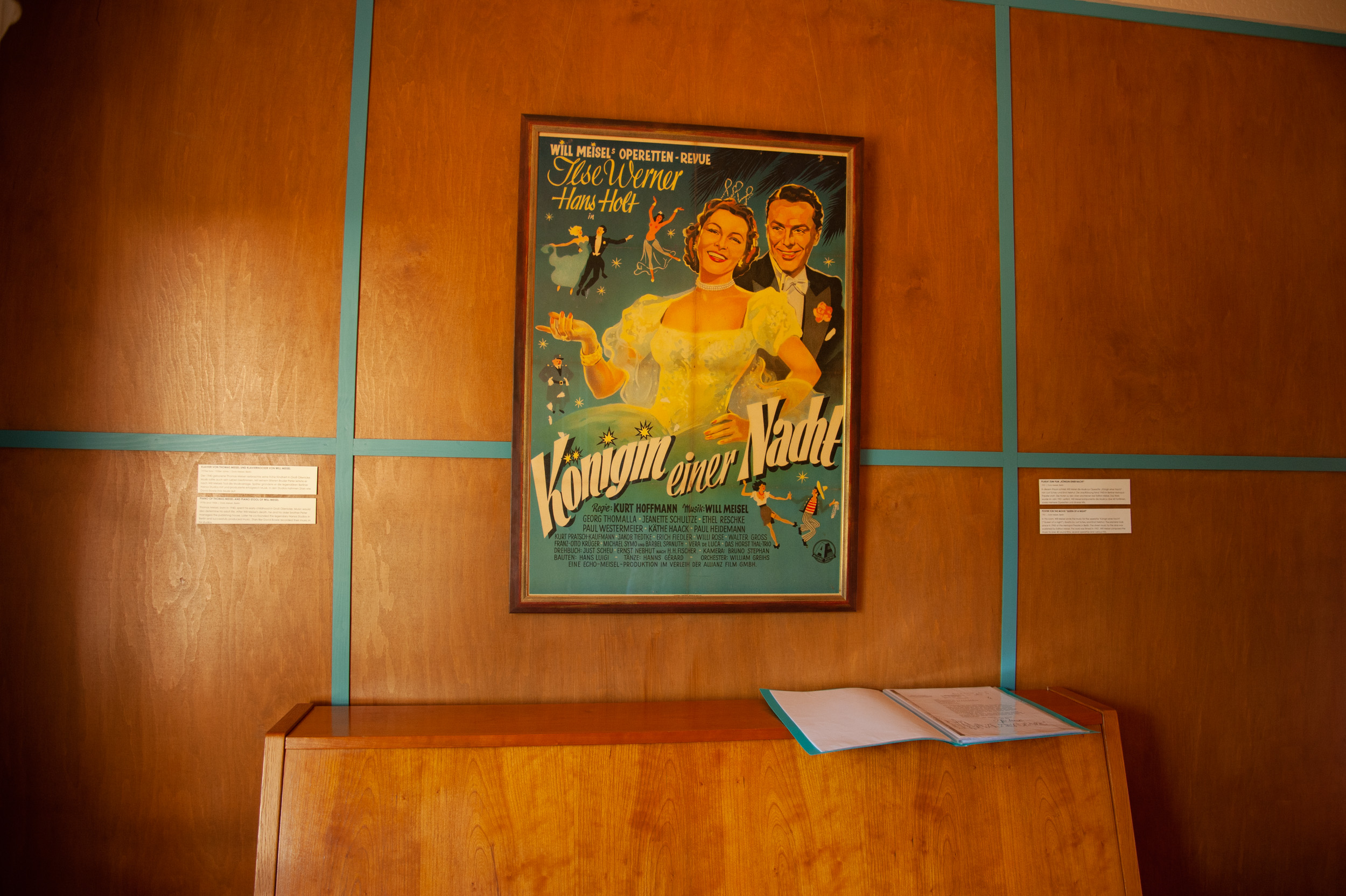
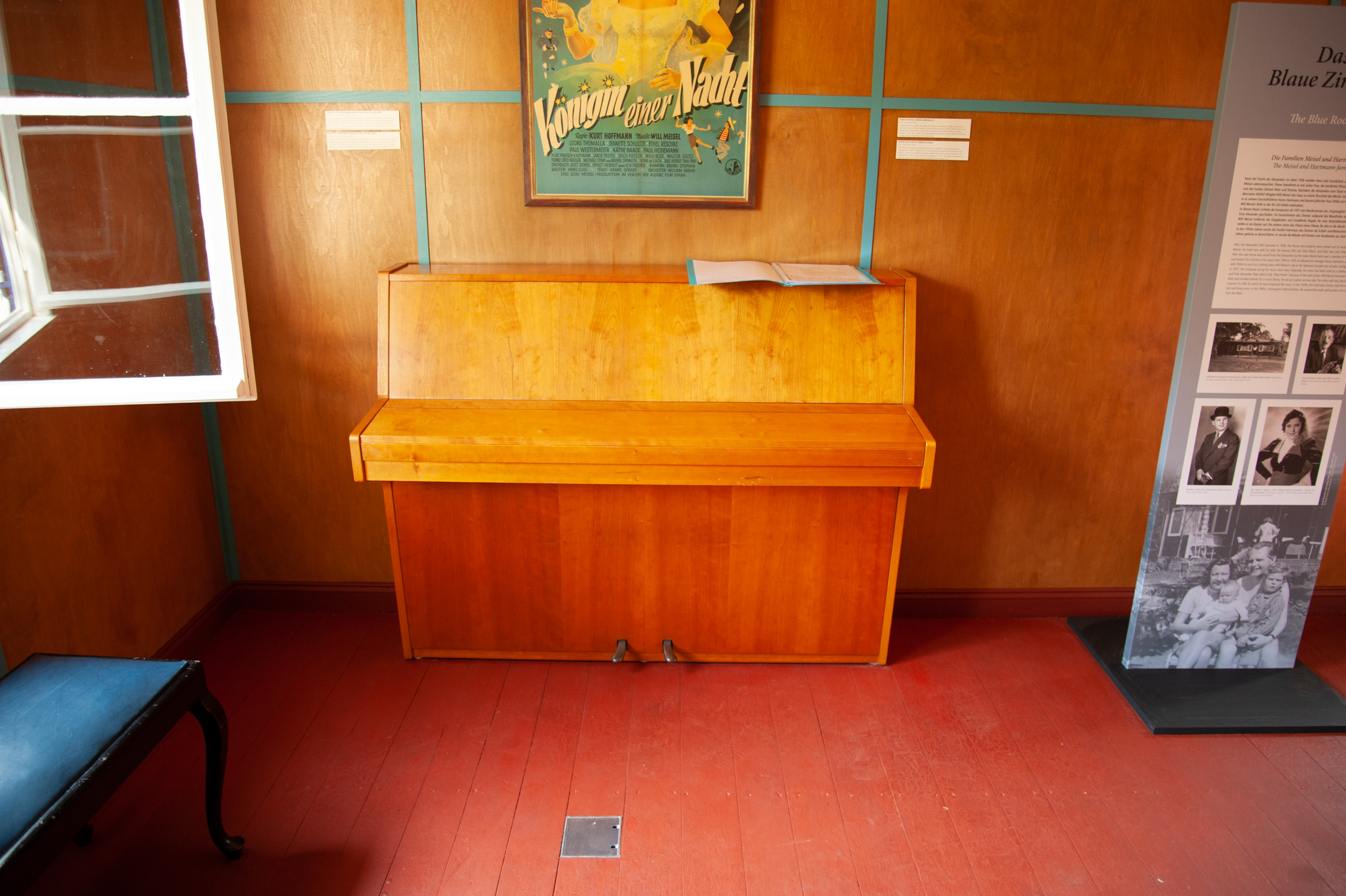
A folder on top of the piano had a collection of documents about the life of Will Meisel. This one is a letter that he wrote during the Nazi period. Notice that at the bottom he signs it “Heil Hitler:”
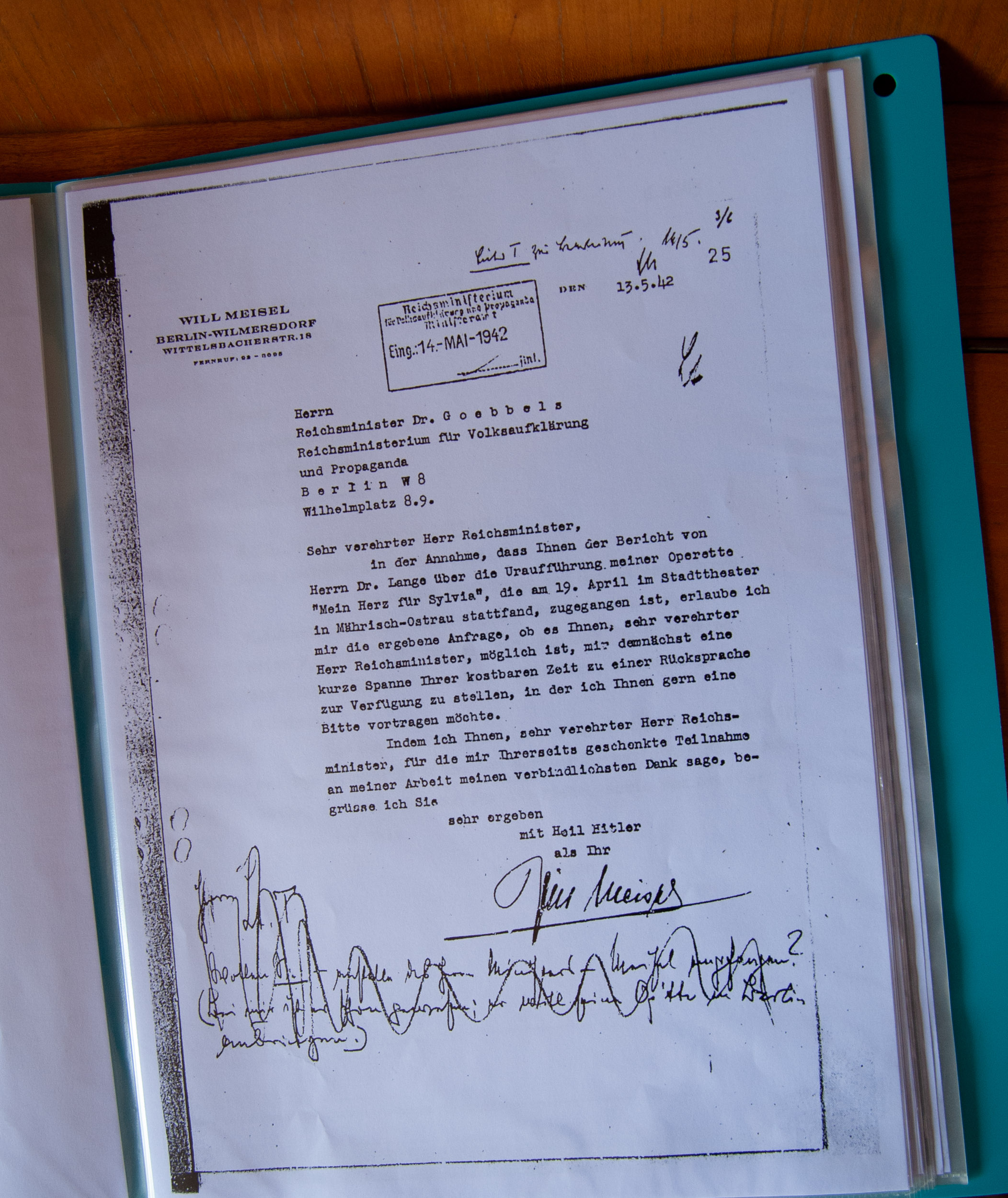
This document is from the Allied powers and dates several years after the end of the war. All former Nazi business owners were required by the Allies to go through a process of “De-nazification” before they could reclaim the helm of their business. This document indicates that, as of 1947, Mr. Meisel has not gone through the process yet. The allies clearly did not have a favorable opinion of him, describing him as, “as black a character as can be:”
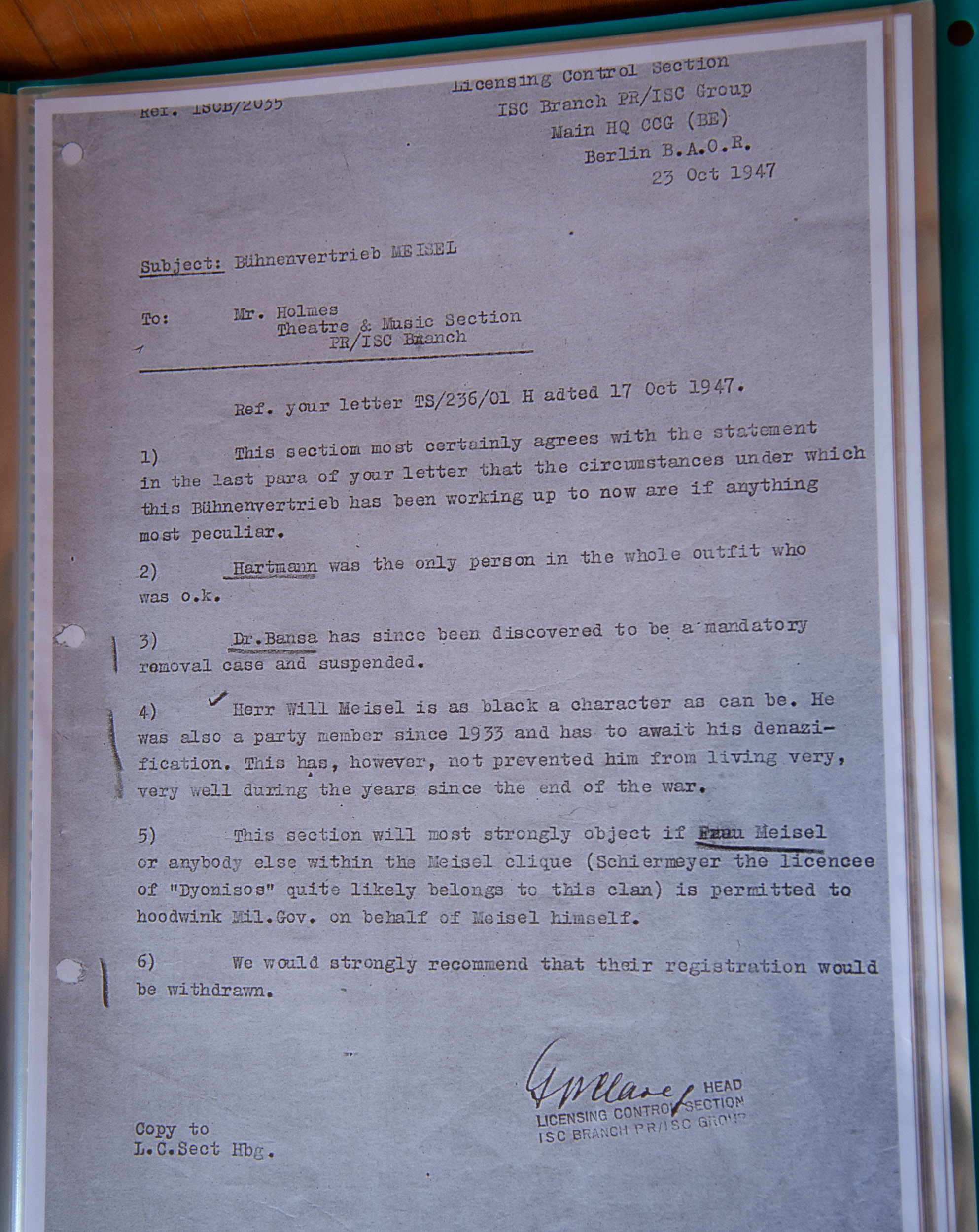
This would have come as a devastating blow to Mr Meisel. He may have joined the party as a way of developing favor with the high command, or to protect his business given the fact that most of the music he published prior to 1933 was performed by Jewish artists. There is little to suggest that he subscribed to the Nazi ideology. He also allowed his friend and business partner, Hanns Hartmann, to keep his Jewish wife hidden in the house by the lake. Hanns had earlier been fired from his job when his employer learned that he had married a Jewish woman.
This is the view of the backyard from the window at the rear of the Blue Room:
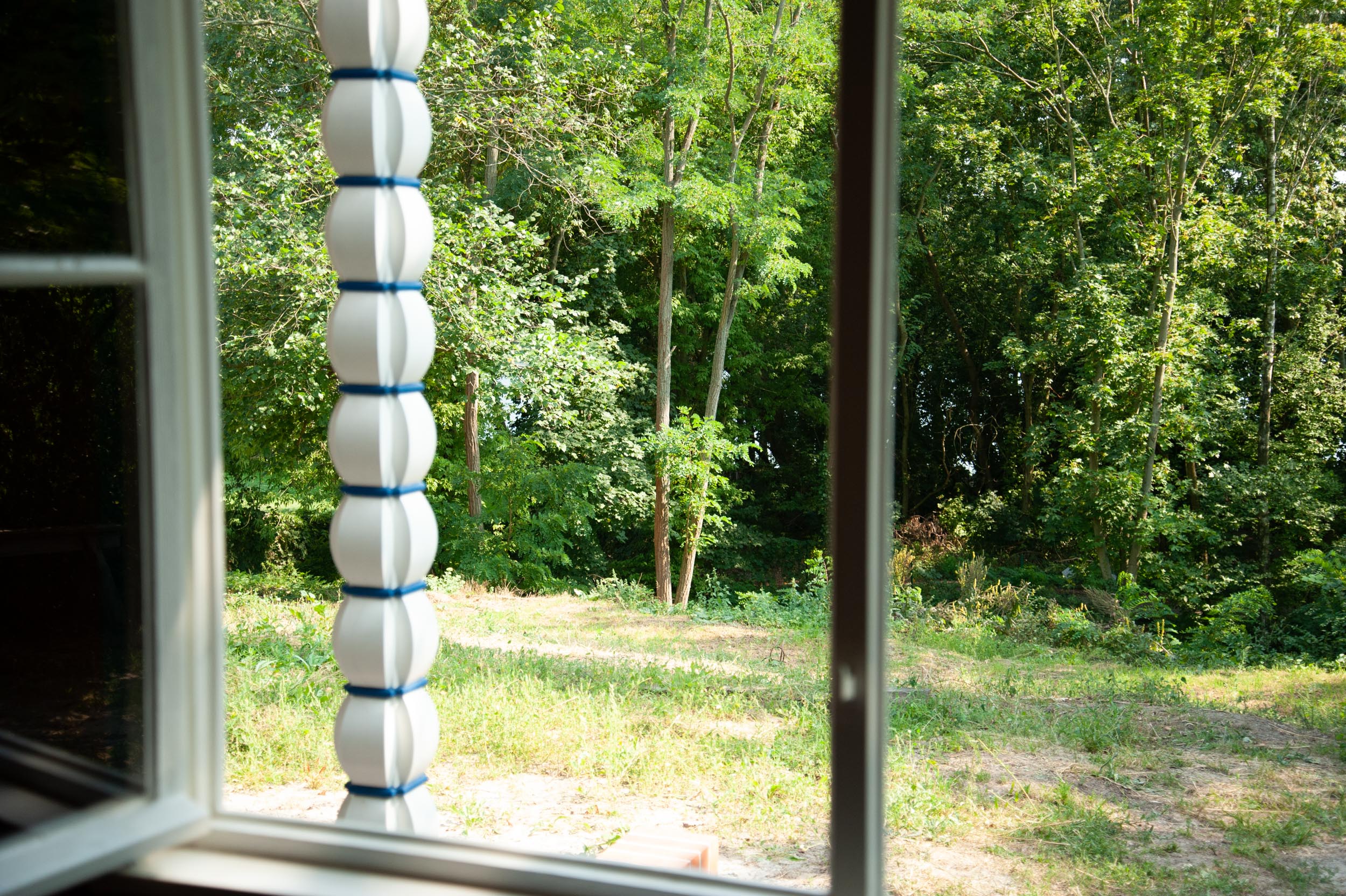
Will Meisel’s gramophone is still here, kept in a corner at the front of the Blue Room:
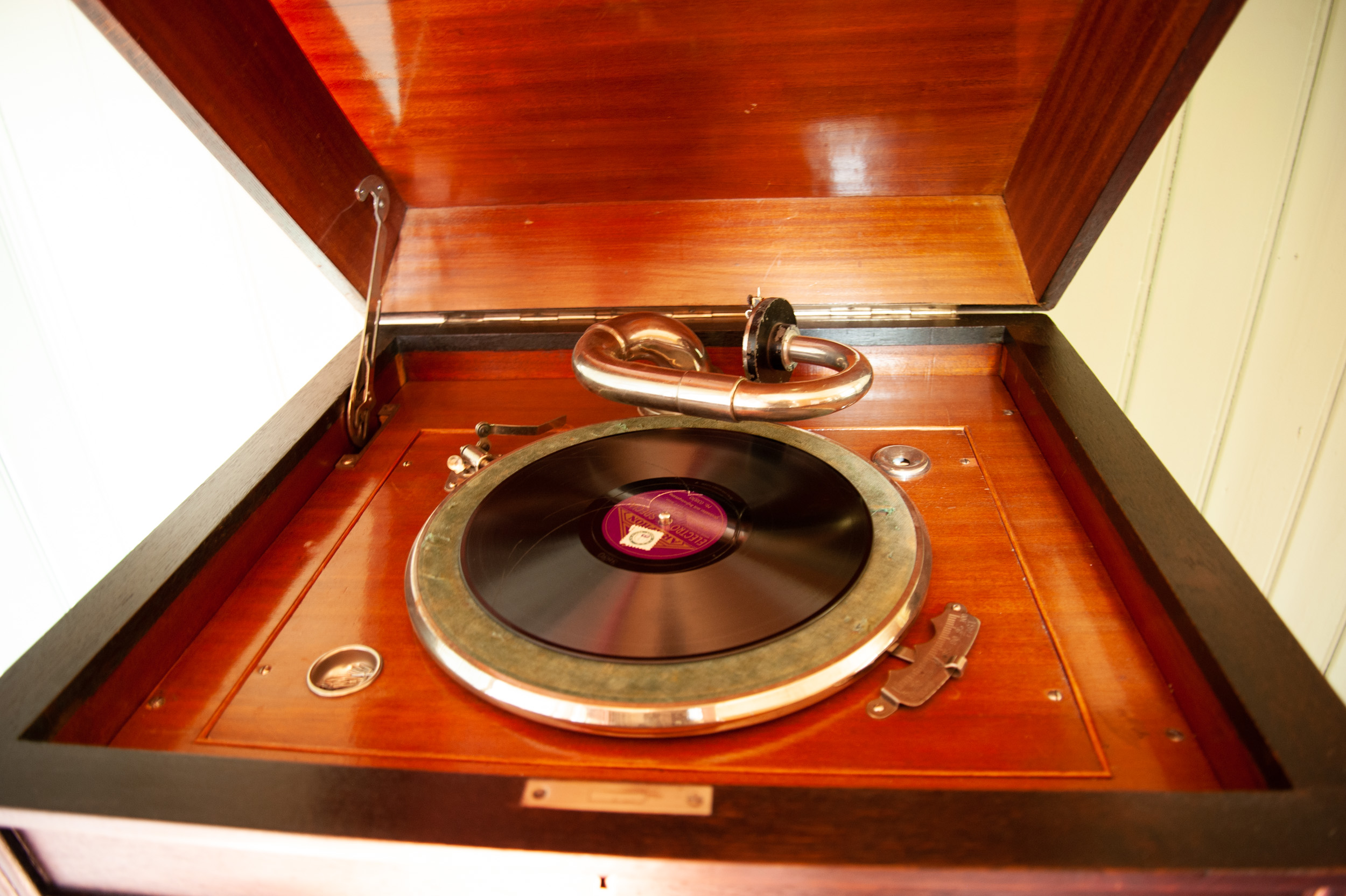
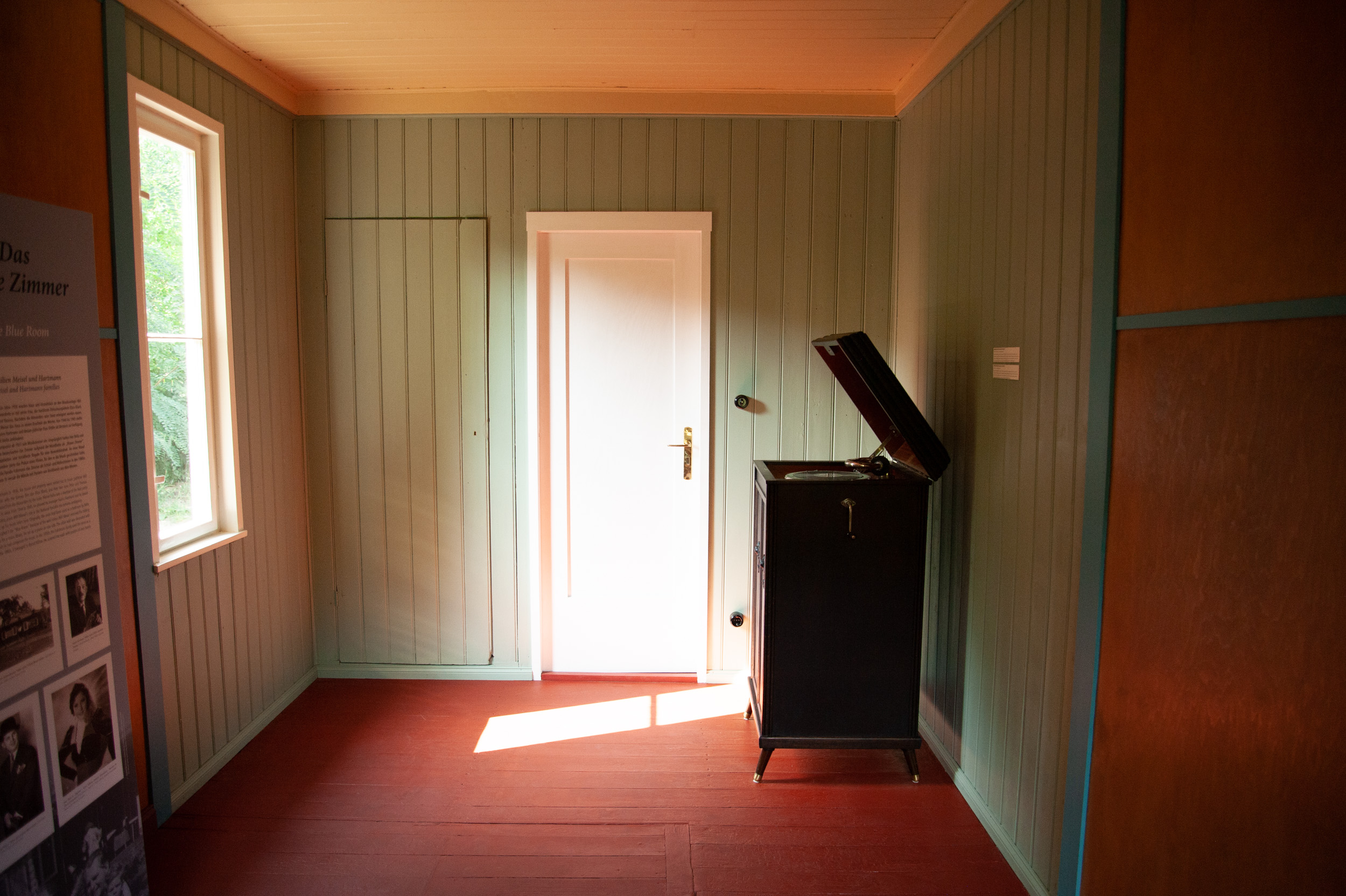
This old bell, hanging over the back of the house, might have been used by Mrs Alexander to call the children in for lunch or dinner:
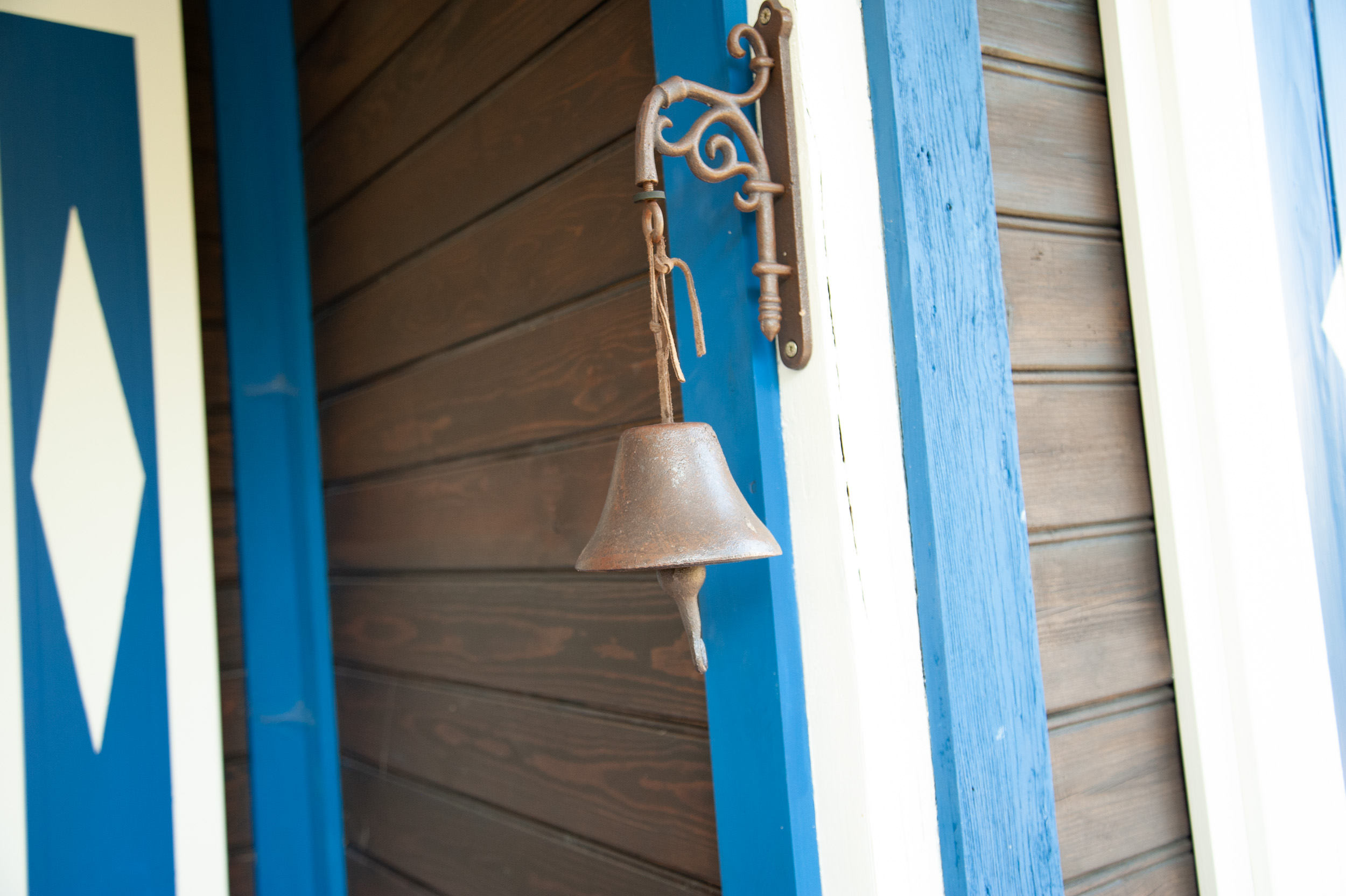
This photo album, containing many happy memories of the Alexander Family and their time in the house, was given to Dr and Mrs Alexander by one of their daughters as an anniversary present:
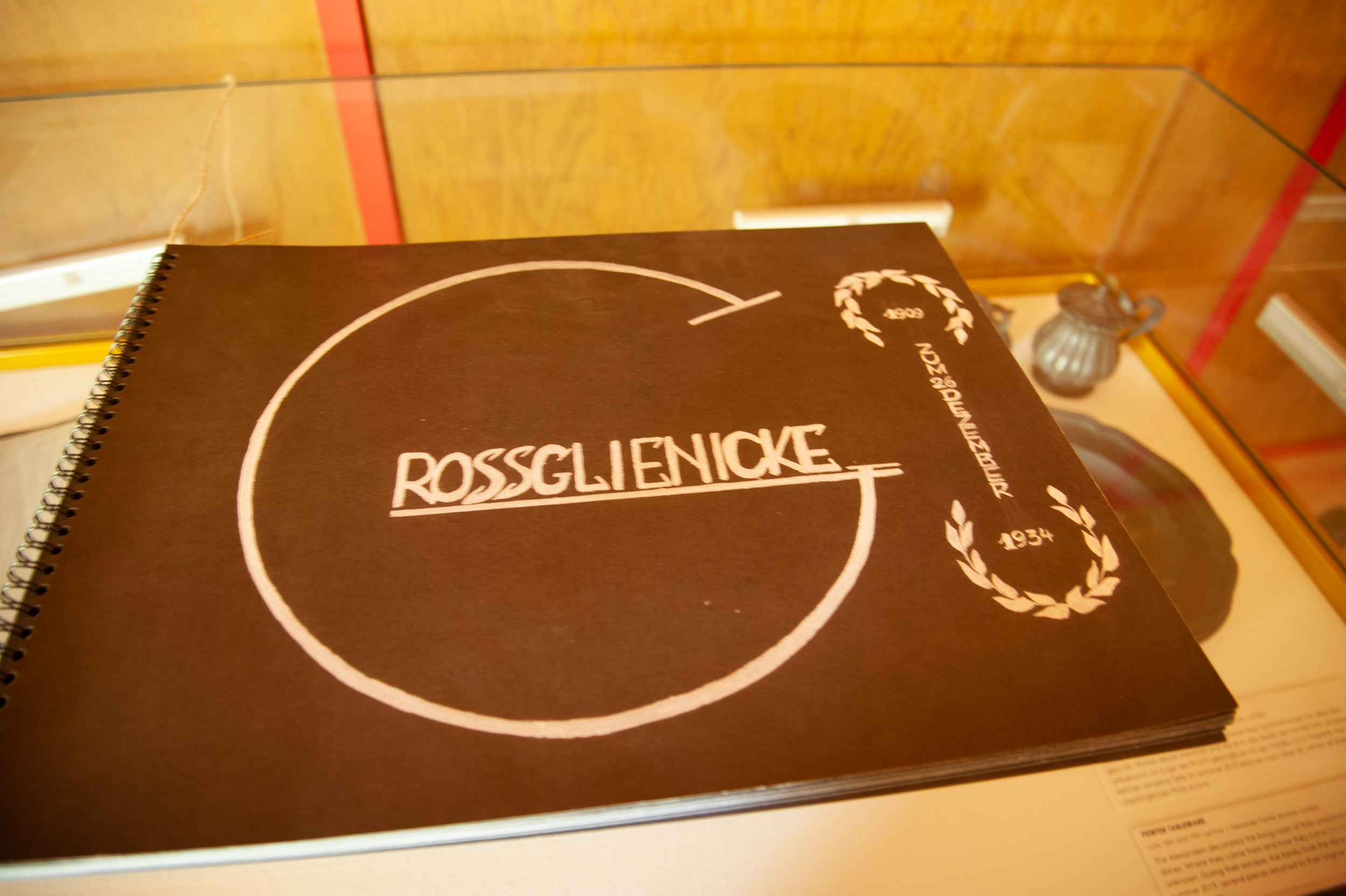
This tableware once belonged to the Alexanders:
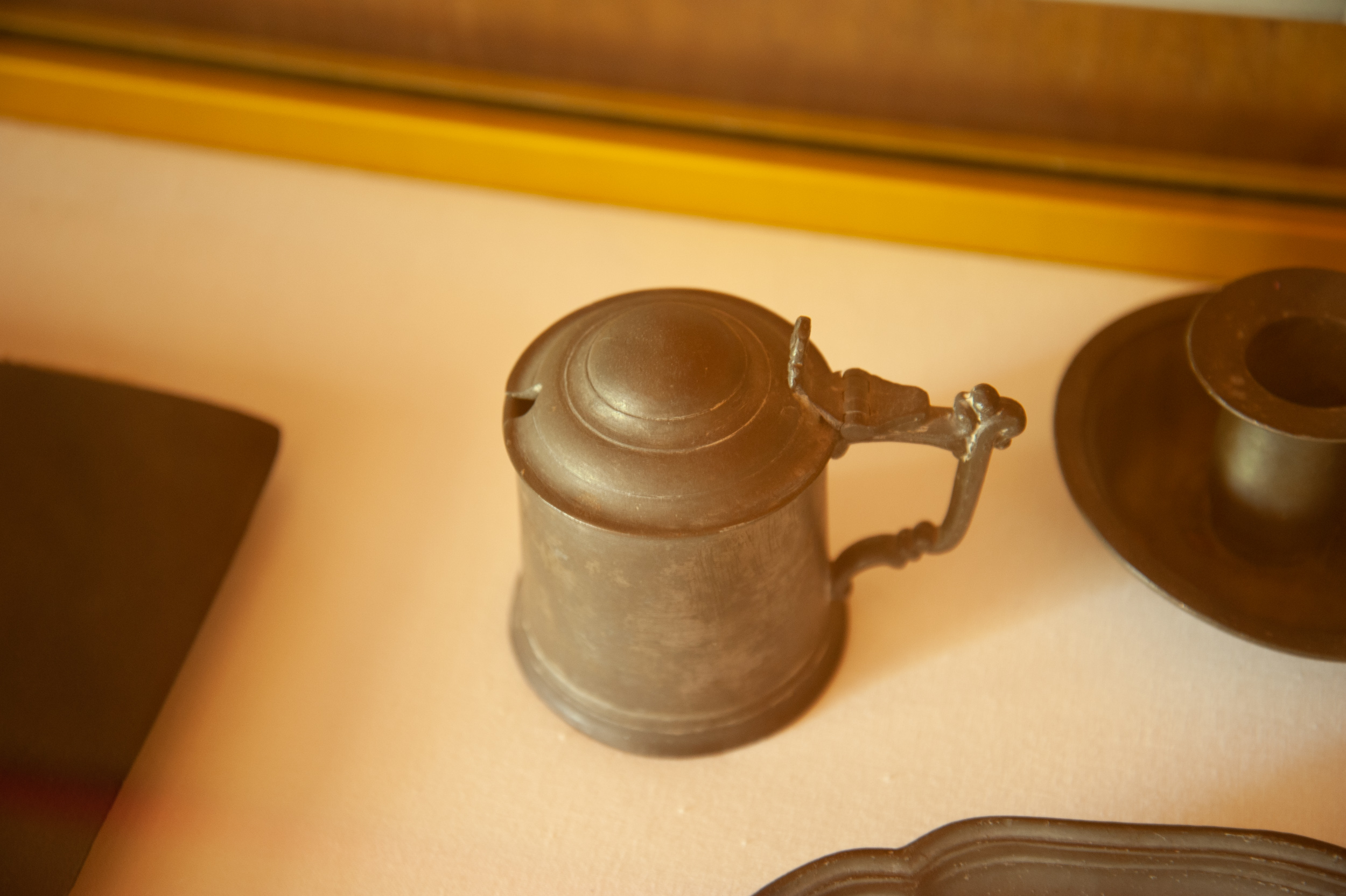
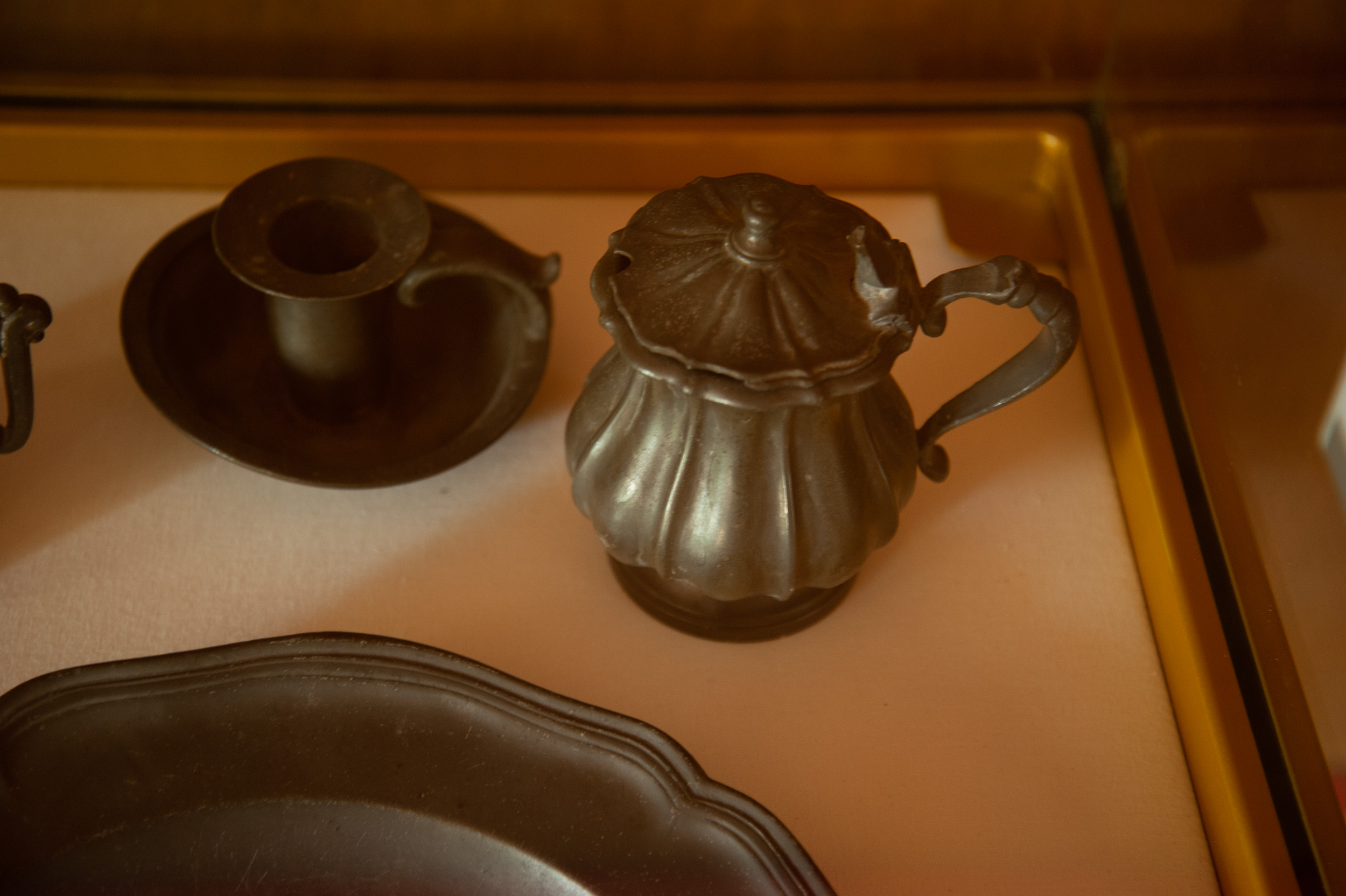
Across the living room from the Blue Room is the Parents’ Bedroom. I found it interesting that, over the many years and families that lived in this house, this room always served as the parents’ bedroom. The recessed area in the wall provided space for the headboard of the bed:
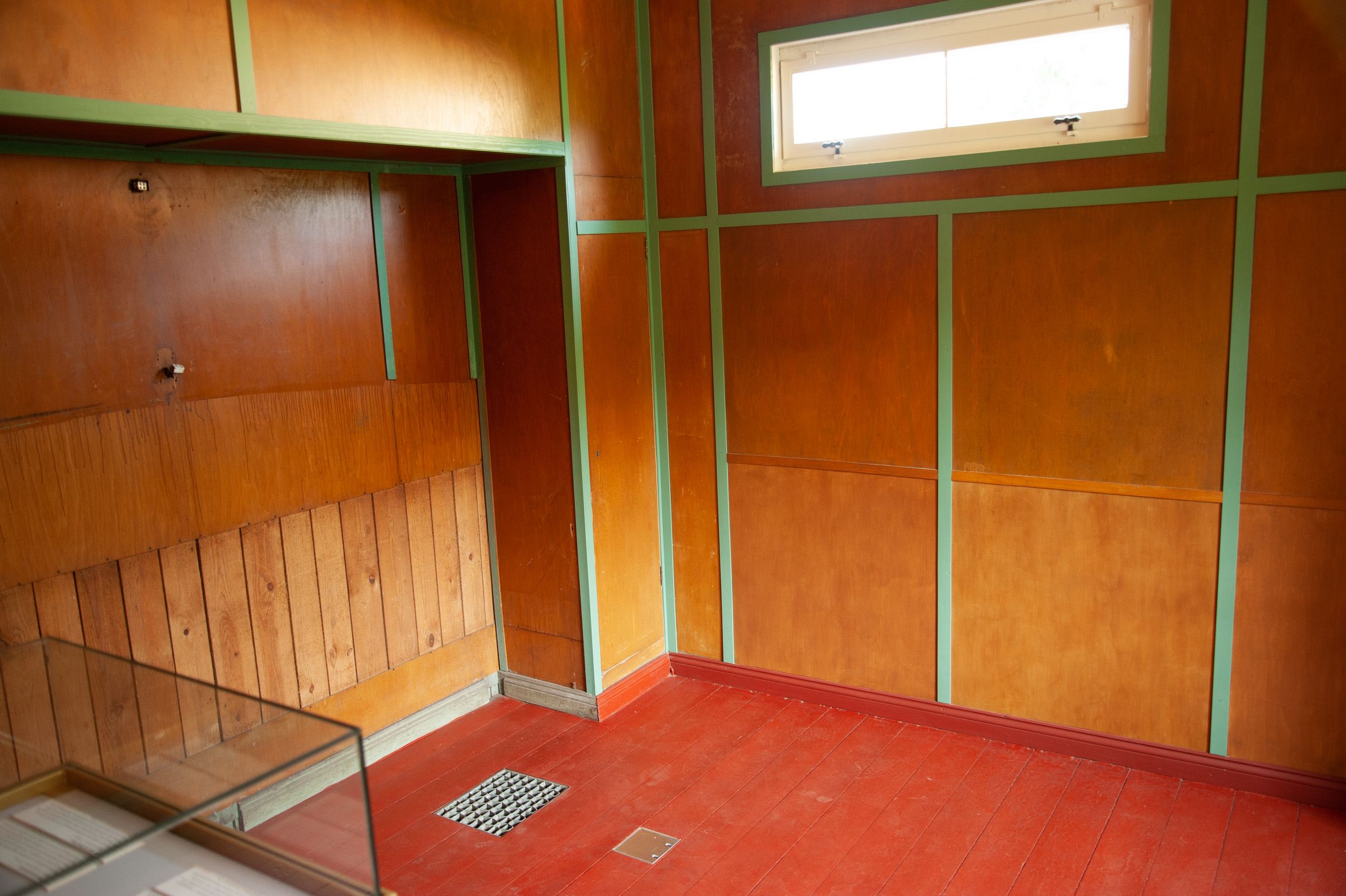
This is the view of the backyard from the window at the rear of the Parents’ Bedroom. Wolfgang Kuhne would have seen and heard the Berlin Wall being put up from inside this room:
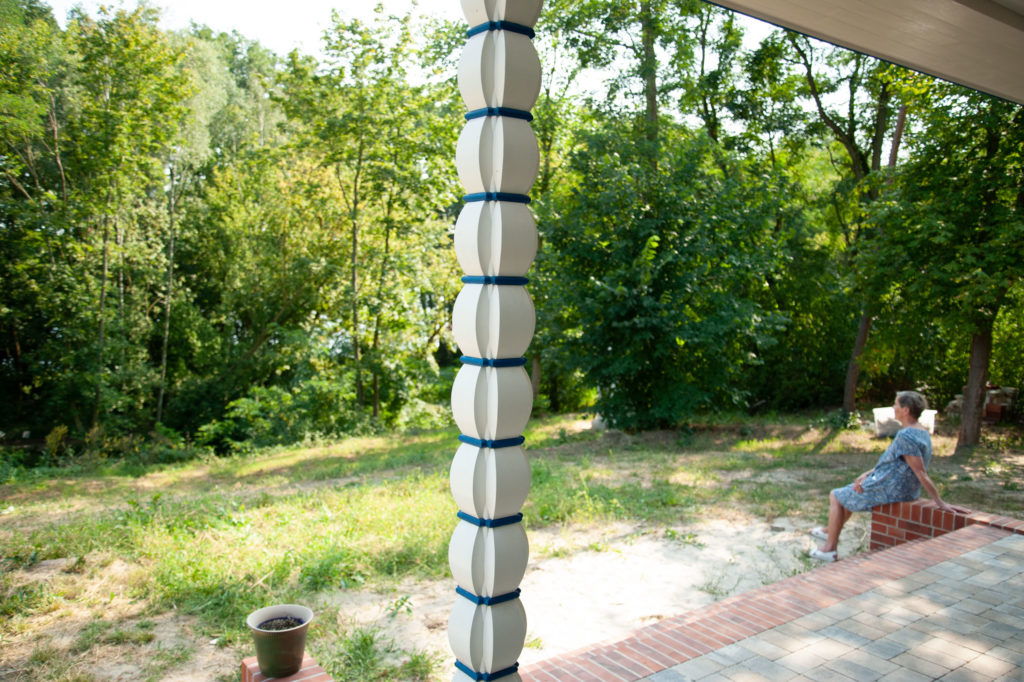
This room had a collection of documents about the life of Roland Schmidt, the millennial born around 1980 who was the last person to live in the house. This book was used by Roland at school, where he was required to learn the national anthem of the DDR:
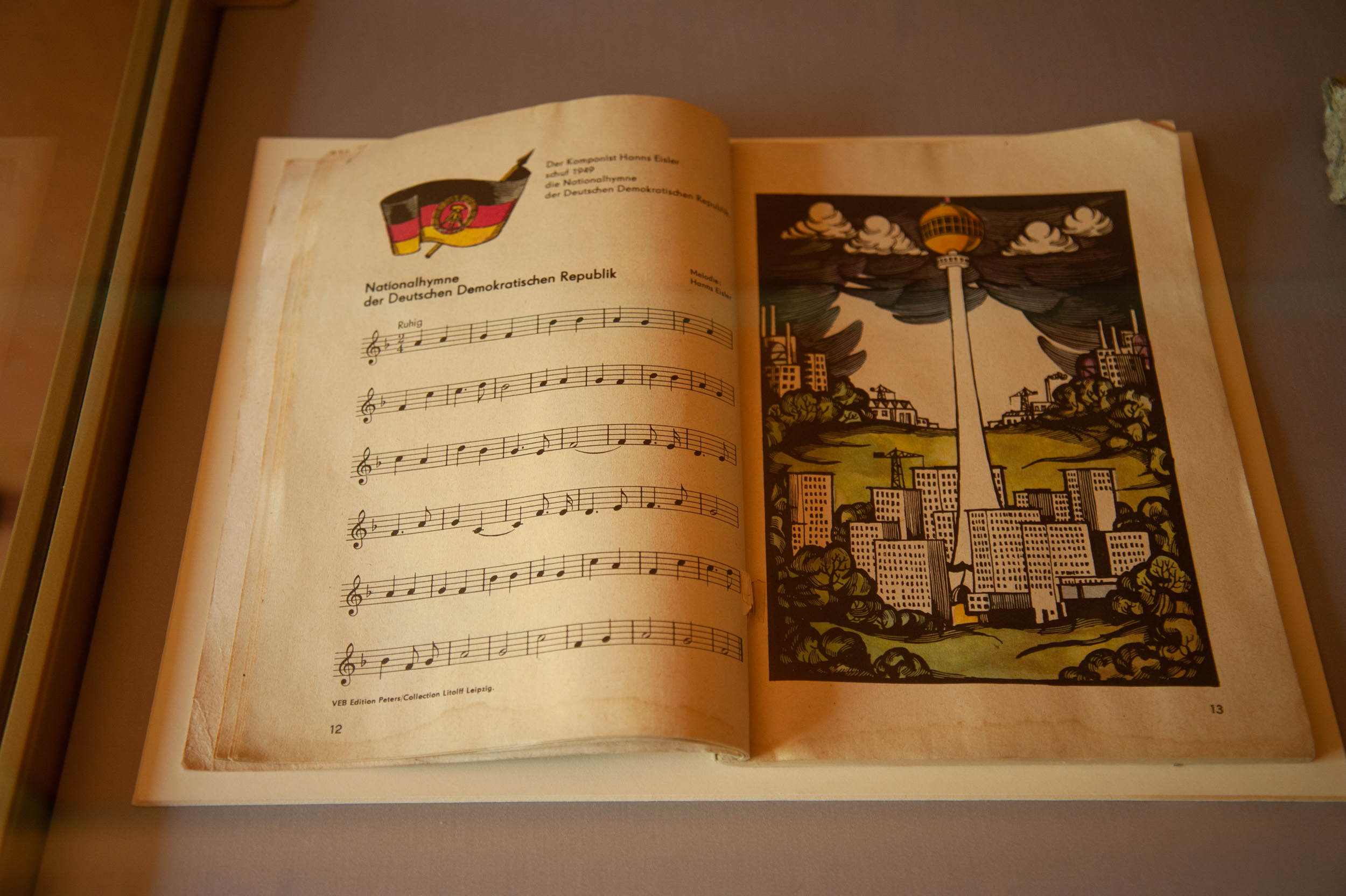
The same exhibit had some rubble from the Berlin Wall collected from the back yard:
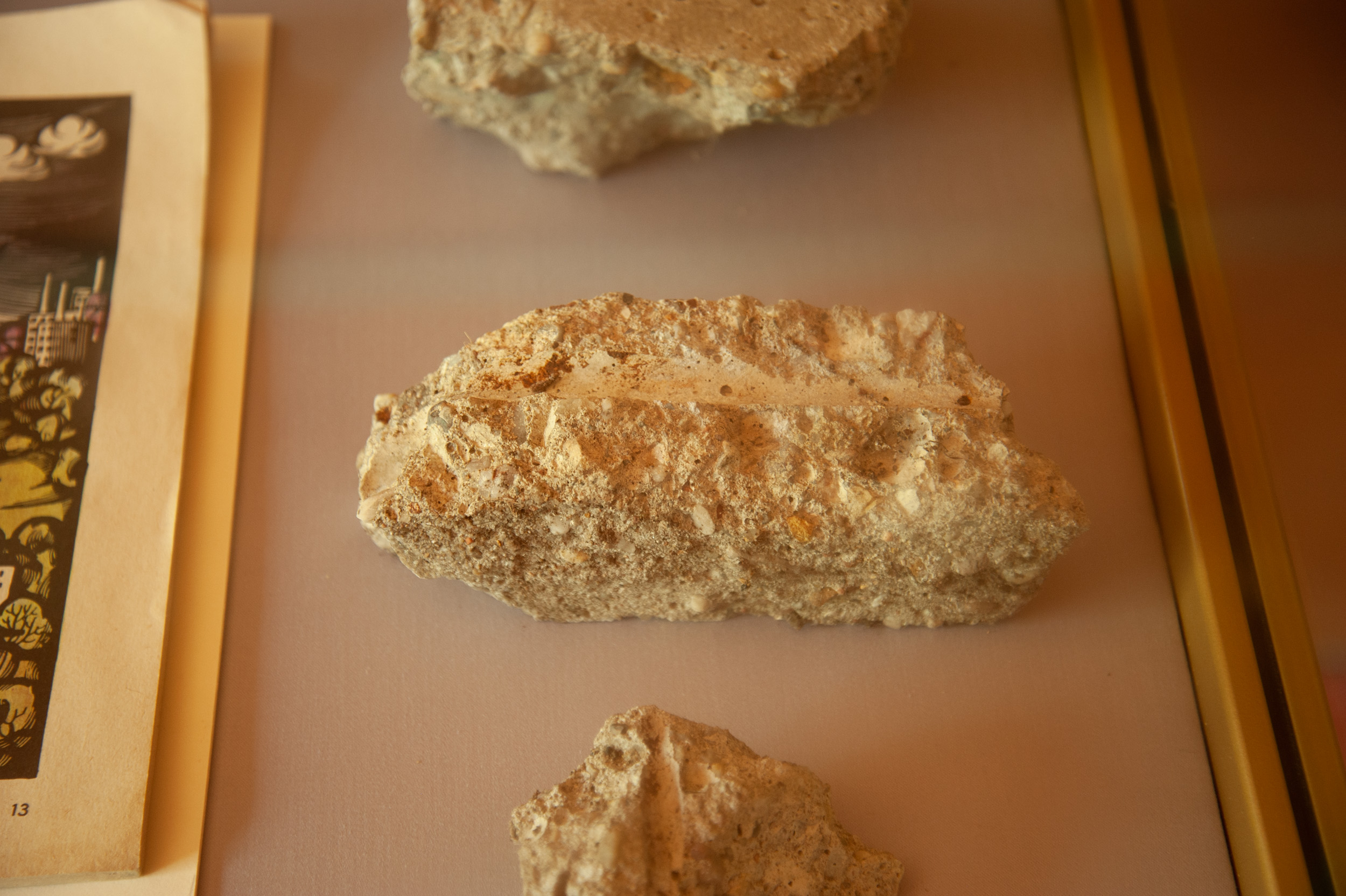
There is also a folder with documents about the life of Wolfgang Kuhne. Here is a copy of his ID from the days of the DDR:
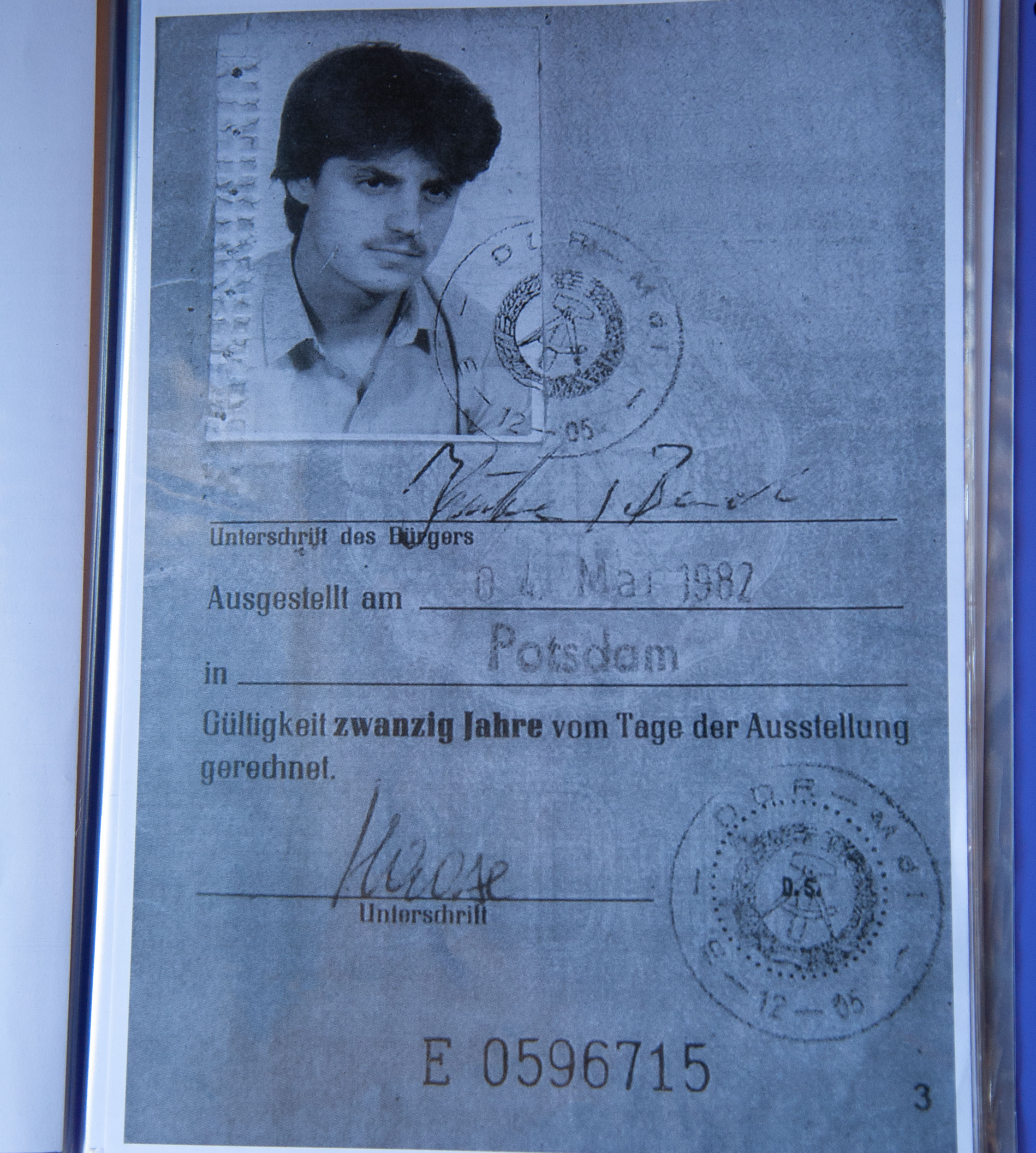
Here he plays with his children at the feet of the now-defunct Berlin Wall:
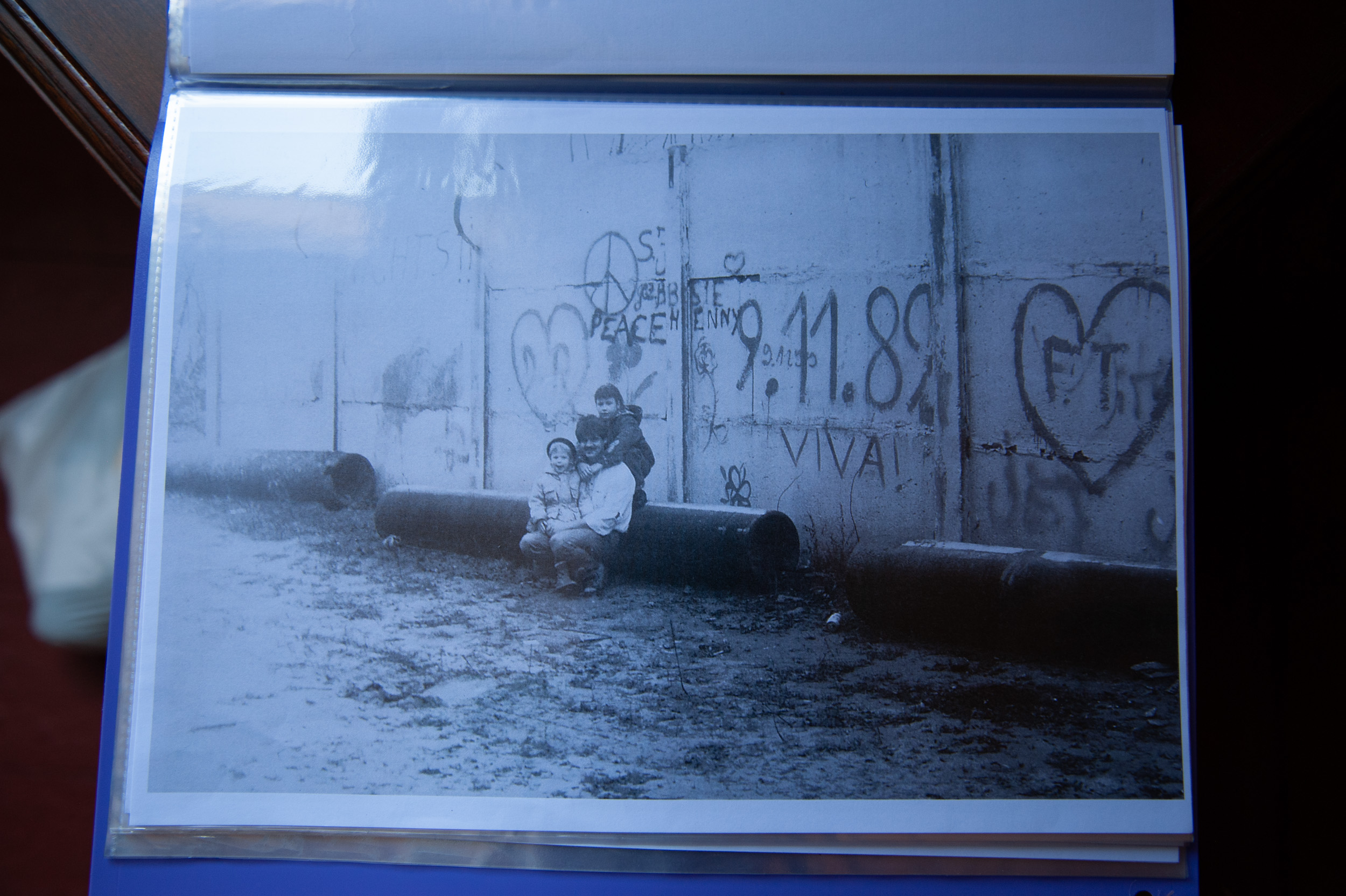
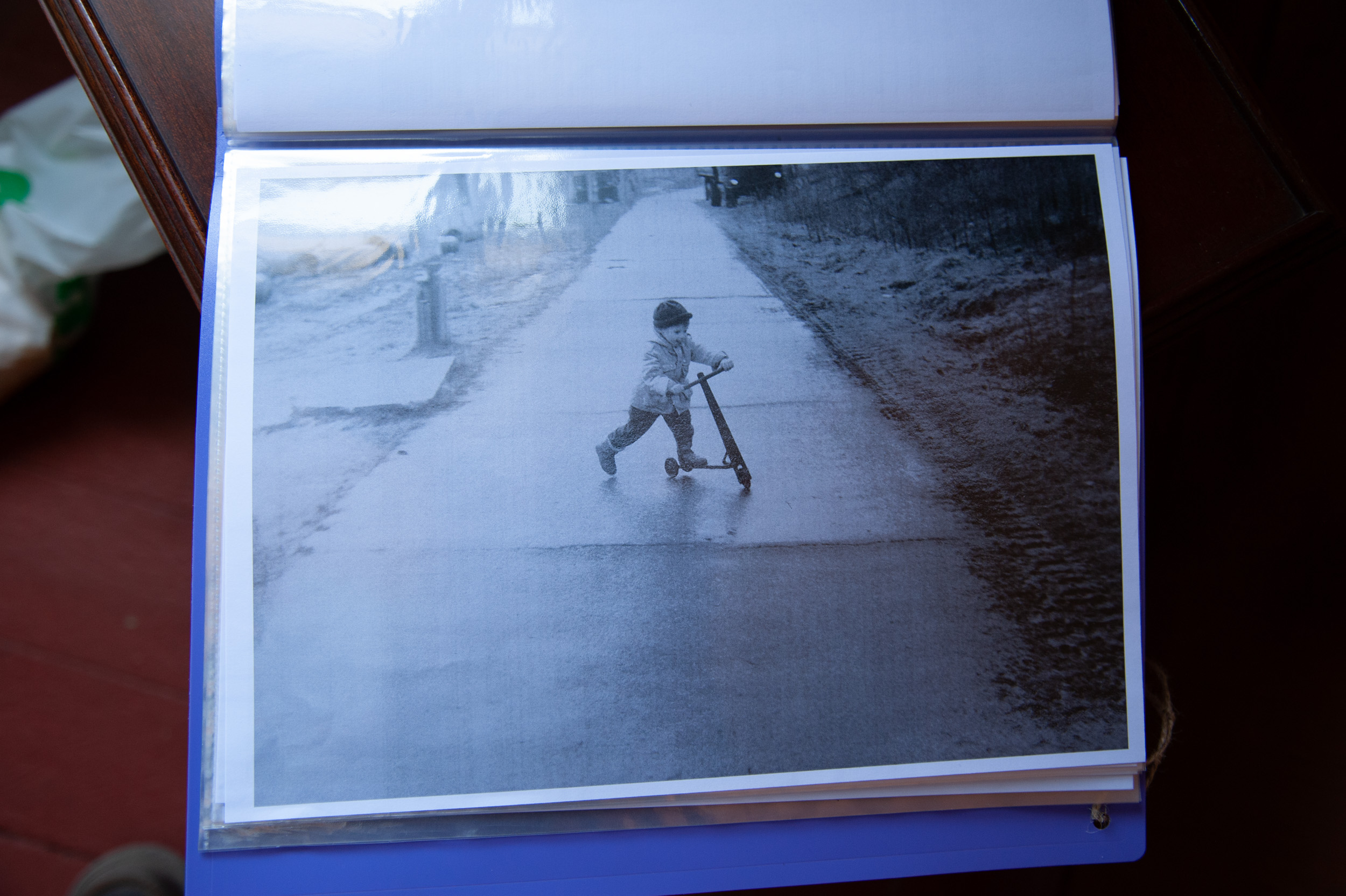
And here he is climbing to the top of a guard tower in the “death strip” of the wall:”
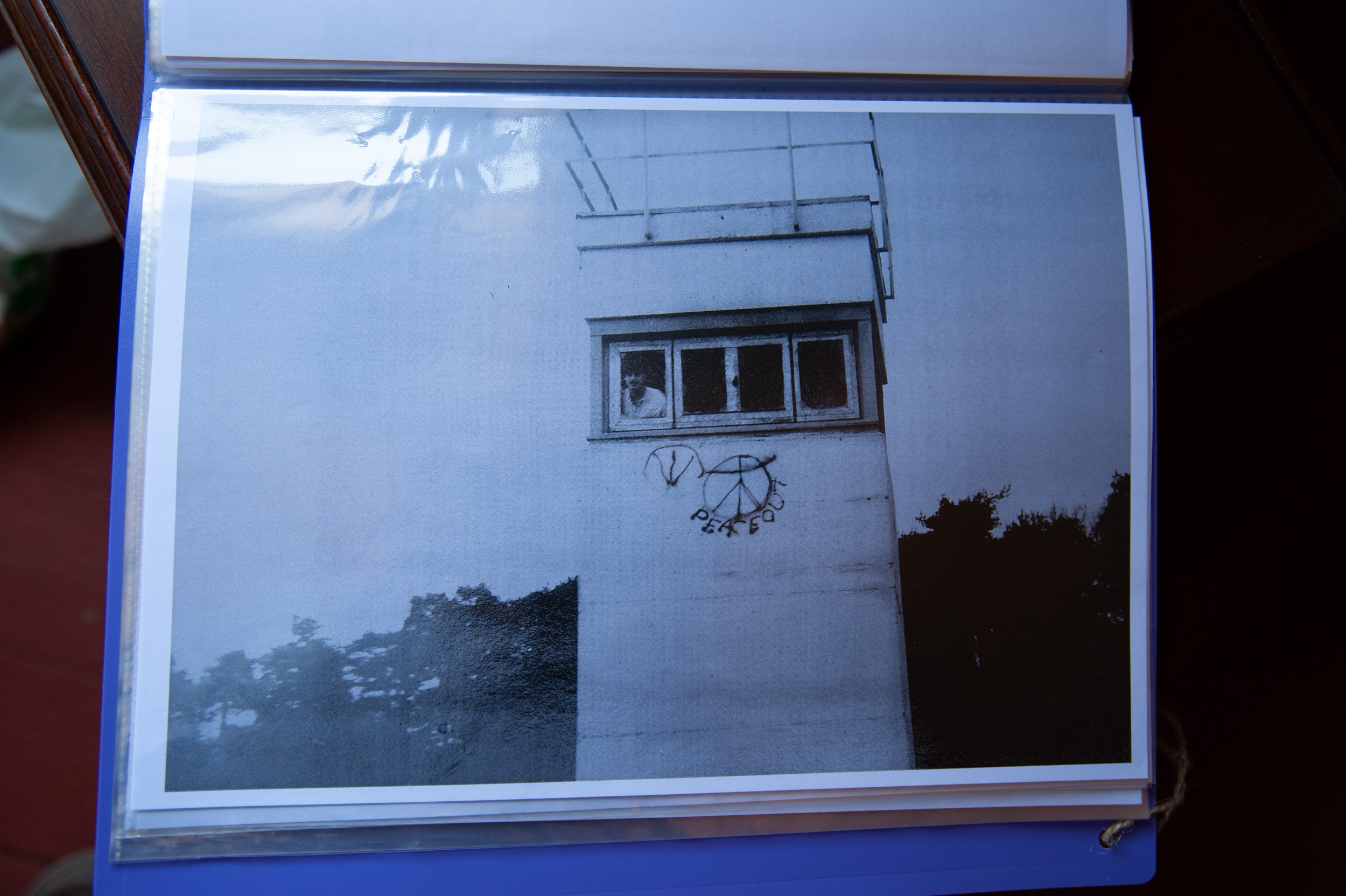
Next to the parents’ bedroom is the Boys’ Room, where the sons of Dr Alexander would have slept. This room is small and has relatively little lighting compared to the rest of the house. Still, one of Dr Alexander’s sons, Hanns, would go on to track down and capture the Kommandant of Auschwitz, Rudolf Hoess. That story is told in a different book by Thomas Harding (same author as “The House by the Lake”), called “Hanns and Rudolf.” This is the view looking out of the Boys’ Room into the Living Room:
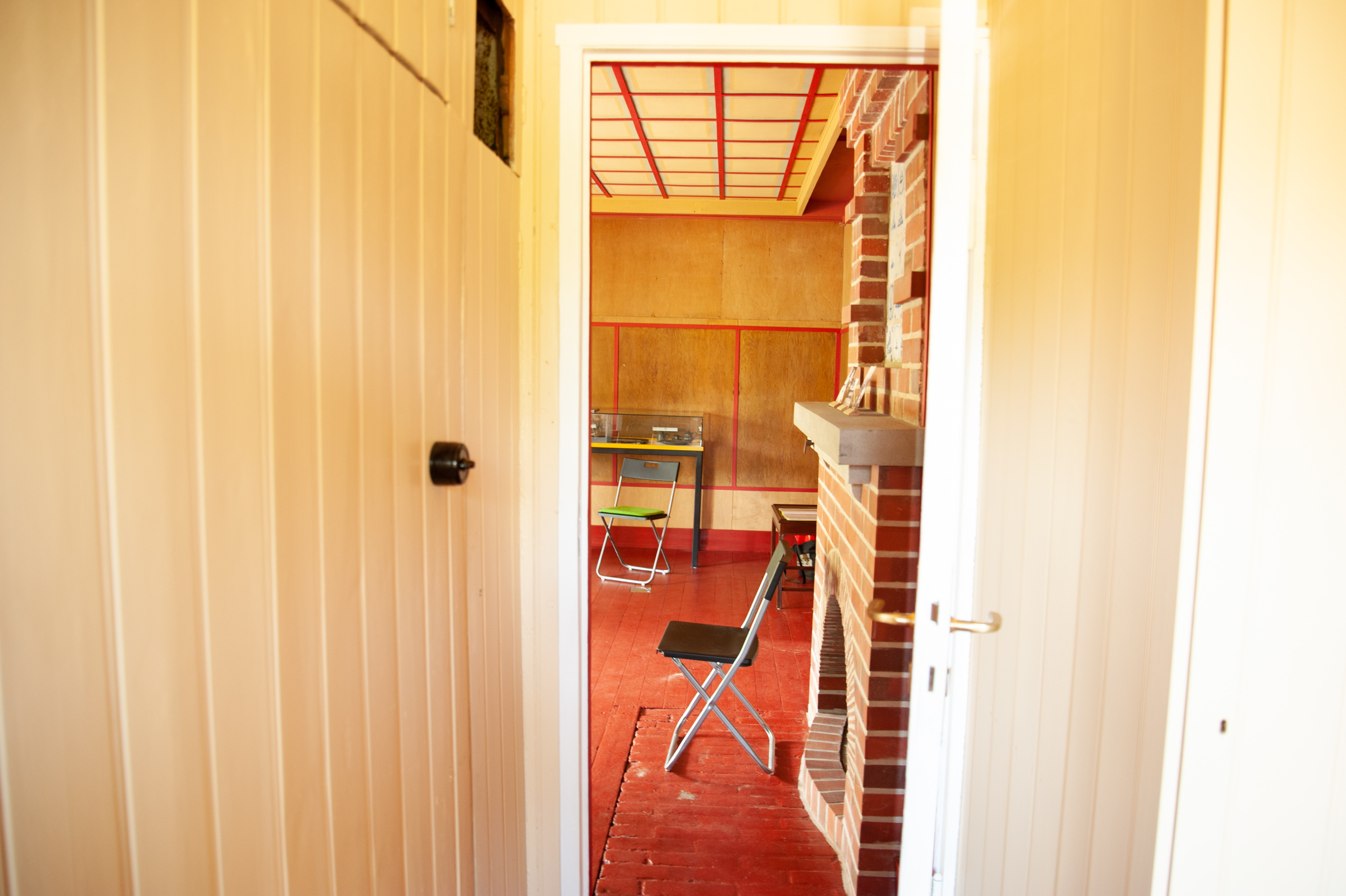
This is the view looking into the Boys’ Room from the Living Room:
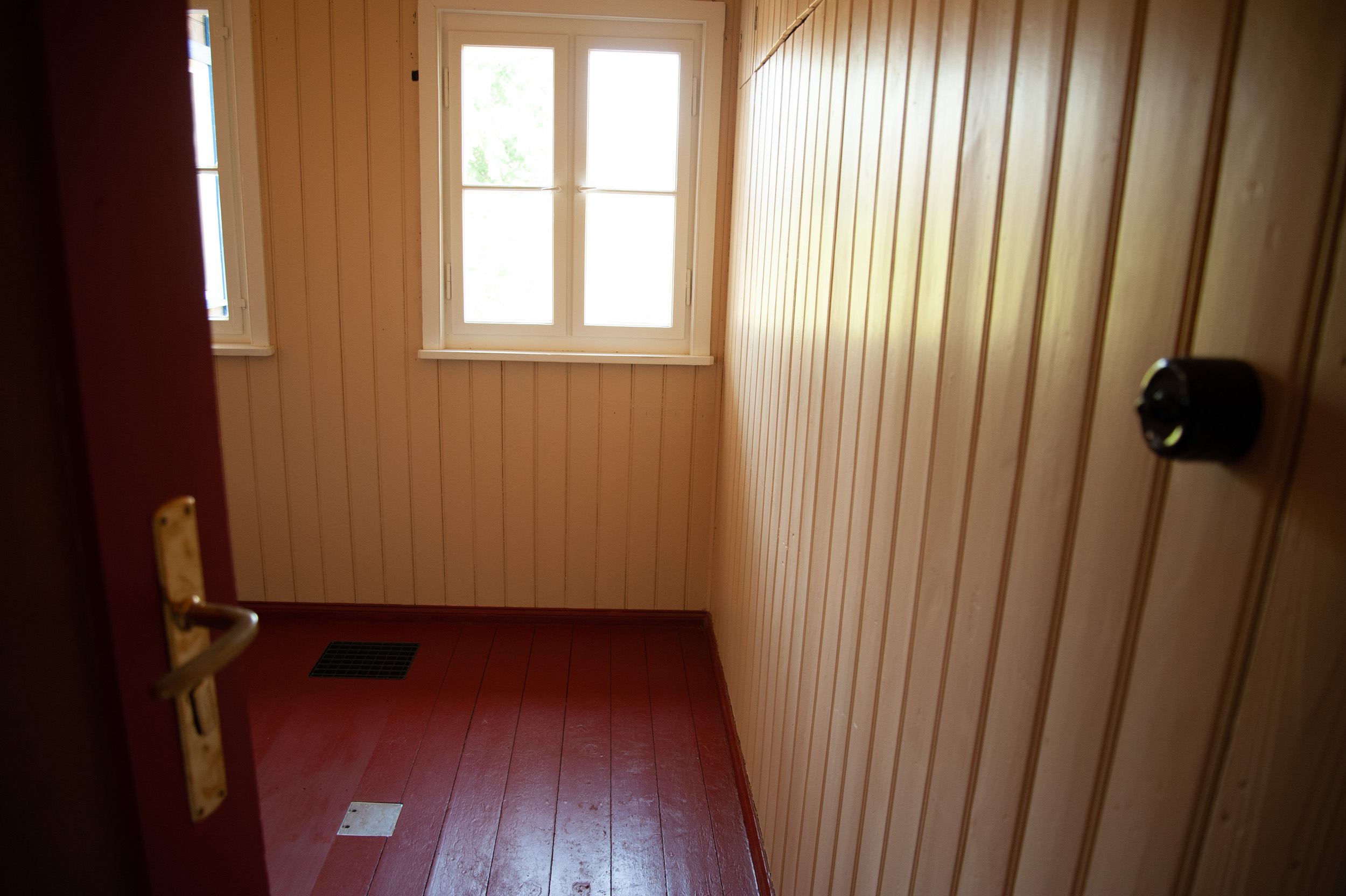
This is a view of the house from the backyard:
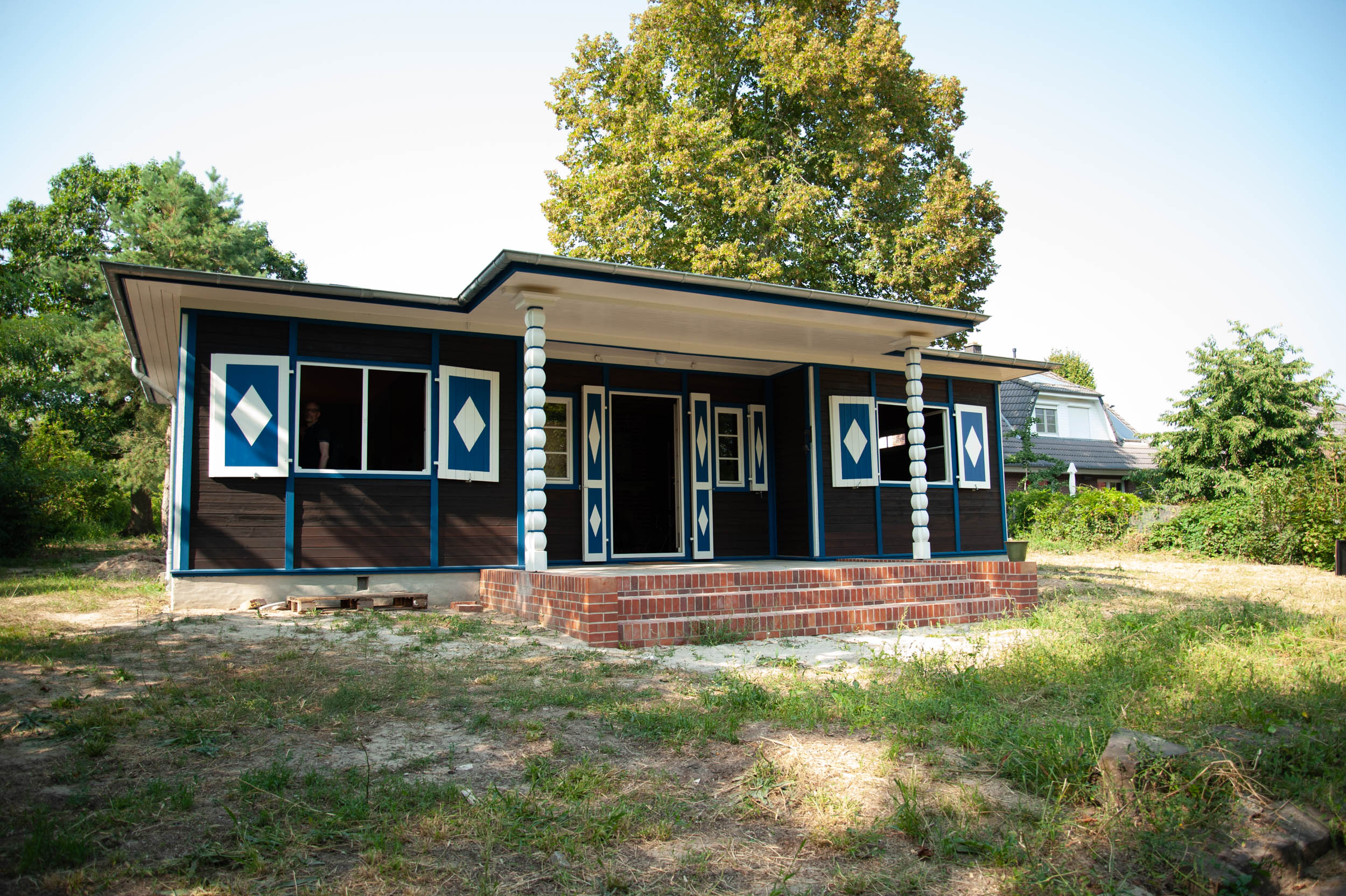
At the edge of the property there is what appears to be a sidewalk. This is really the former border patrol path, which ran down the length of the “death strip” below the Berlin Wall:
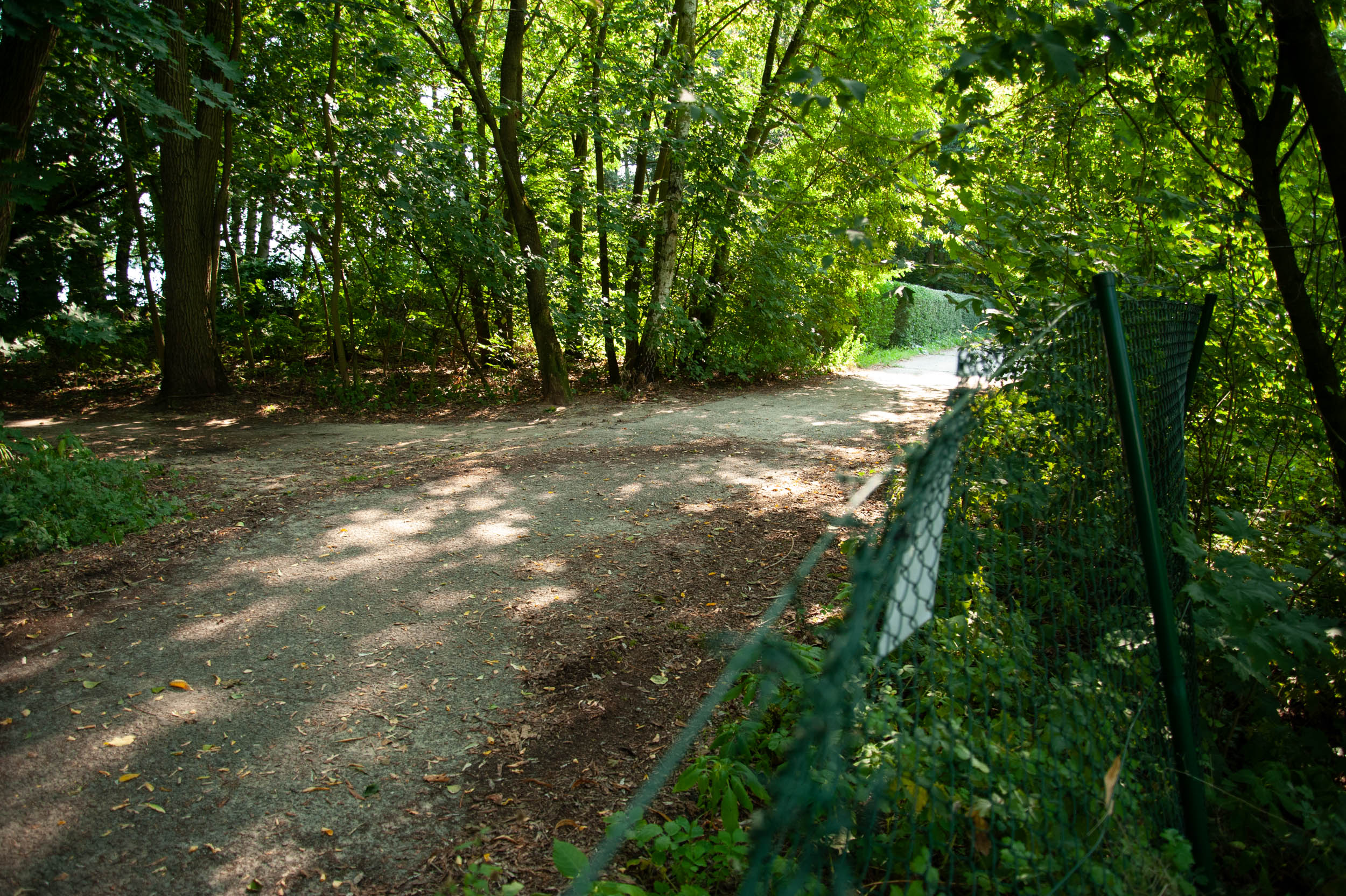
As I was walking back up to the house from the border patrol path, I came upon this rubble which looked to me to be a fragment of the Berlin Wall:
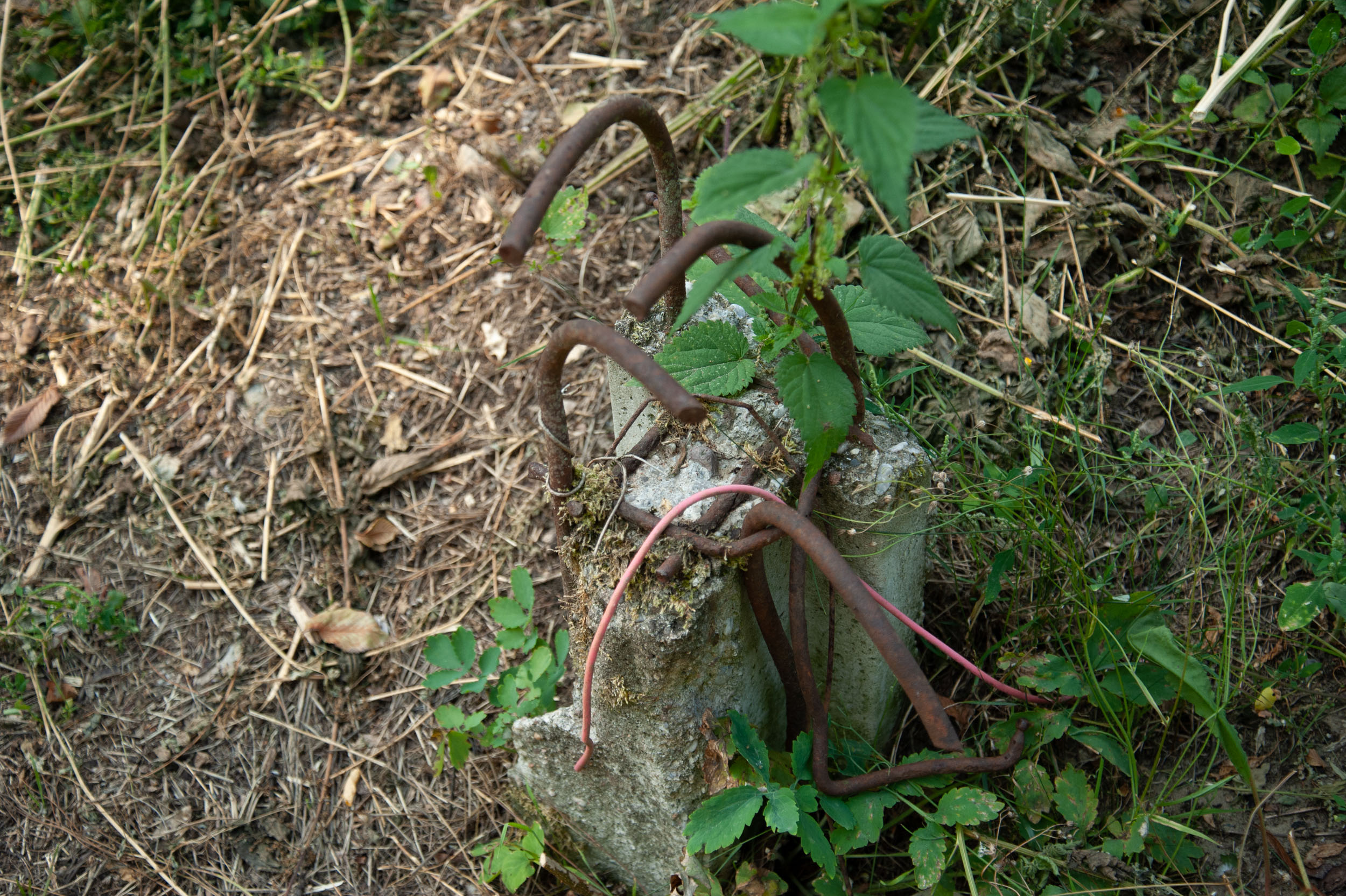
A few more shots of the home’s exterior:
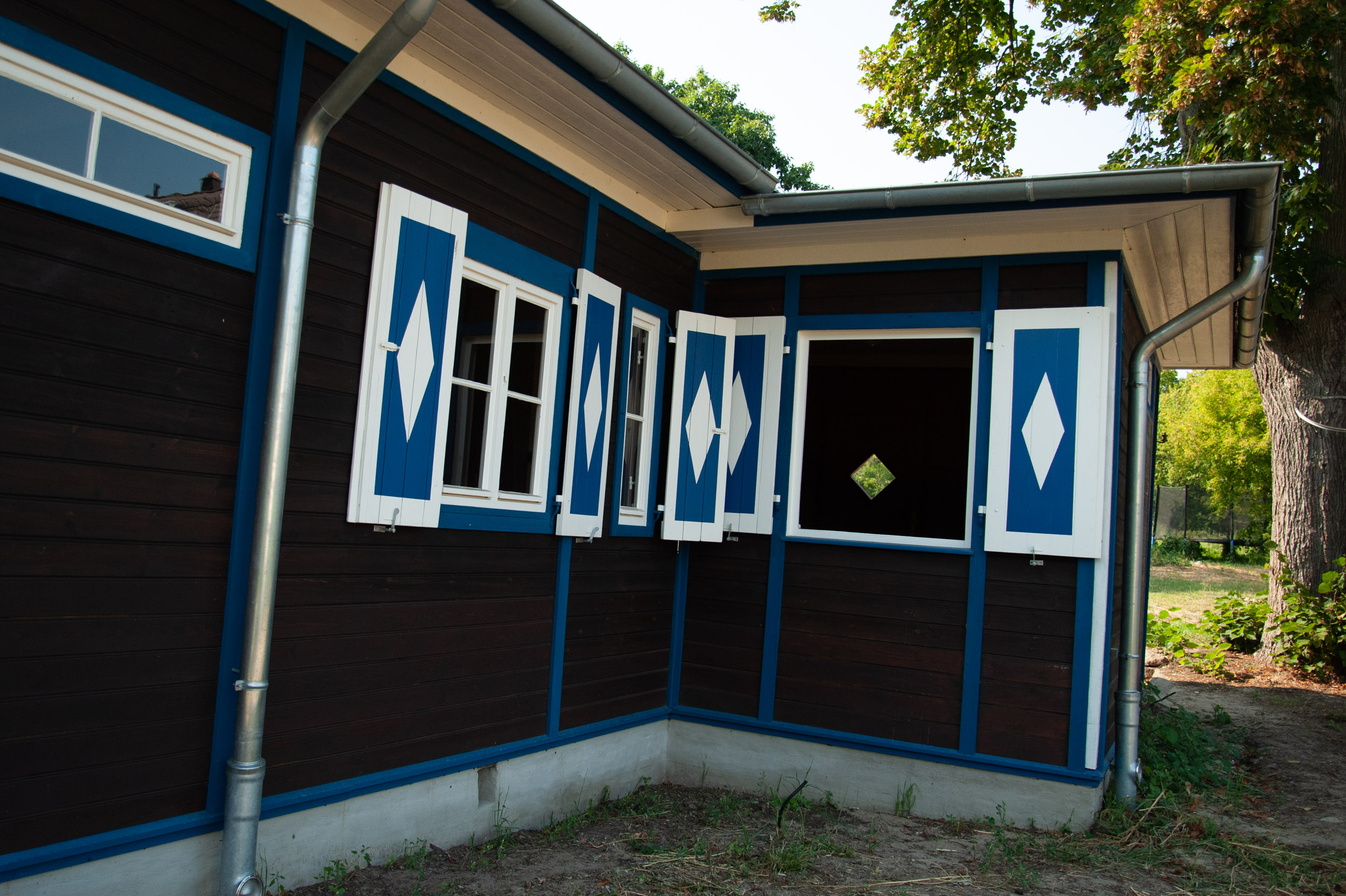
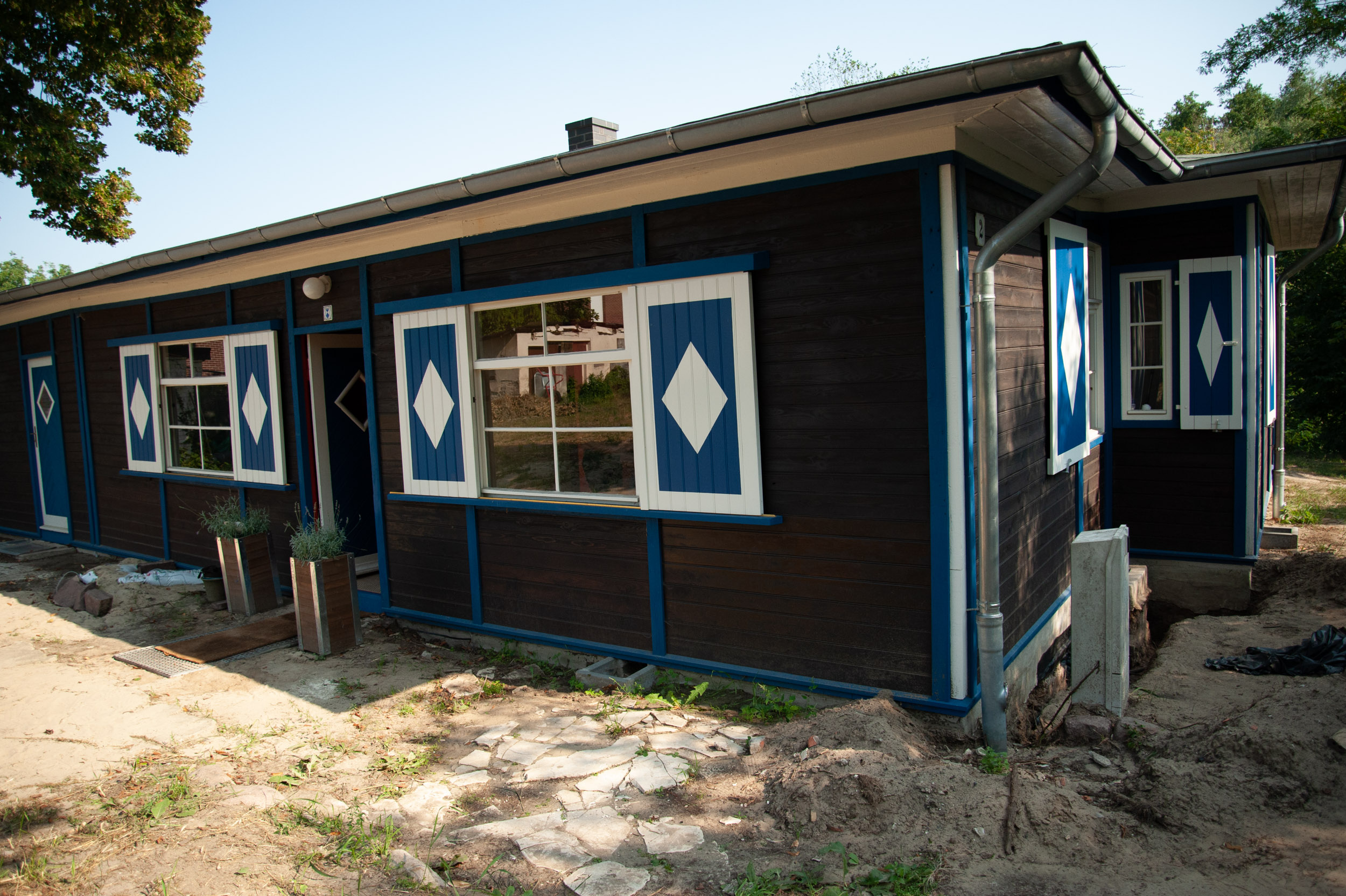
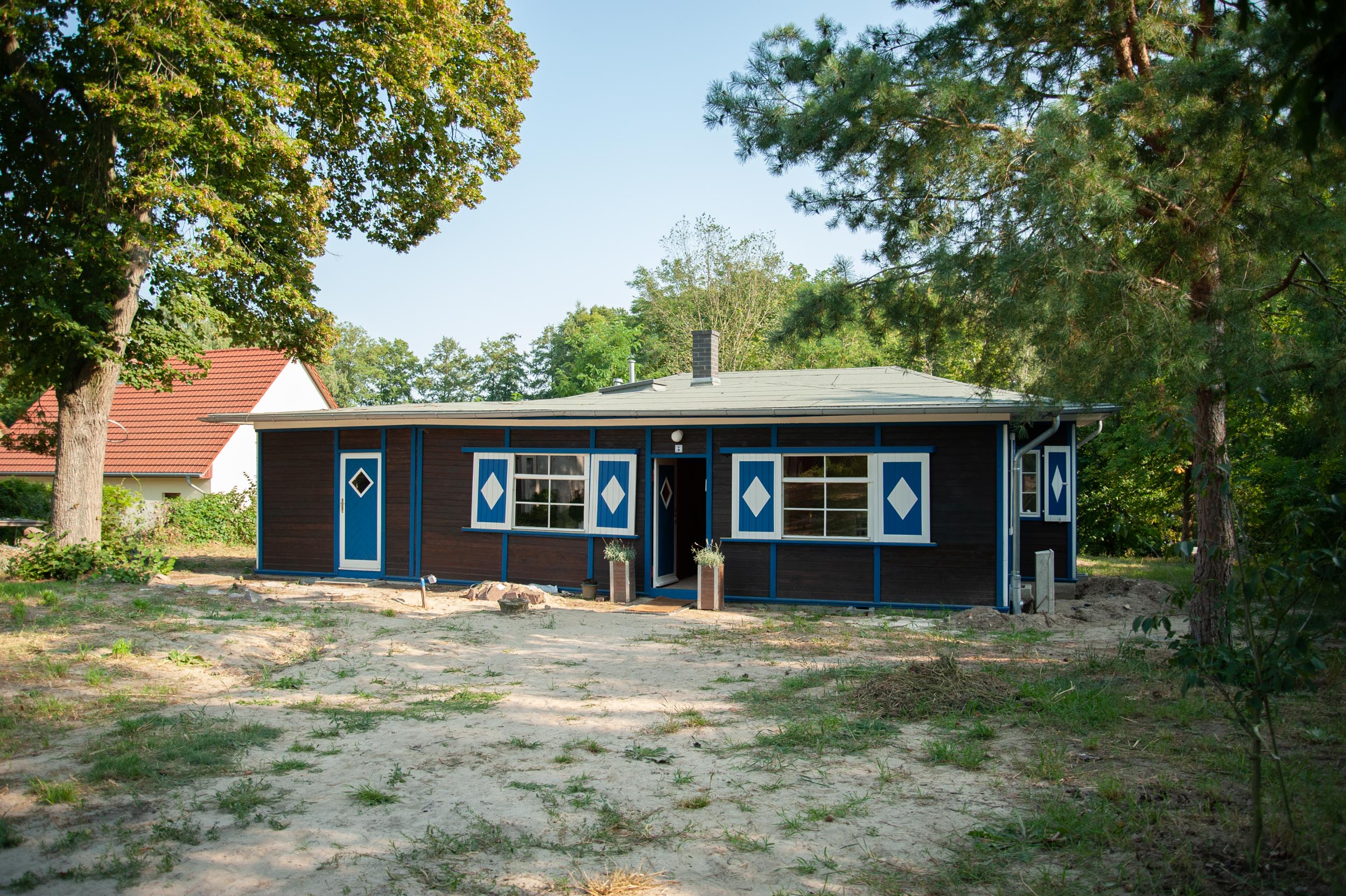
This small plaque indicates that the building it is attached to is a “denkmal,” or memorial. It makes it illegal to tear the building down. Mr Harding when through a great deal of work to get one of these for the house by the lake. At the end of the book there is a very triumphant photograph of him nailing this hard-earned plaque to the front of the house:
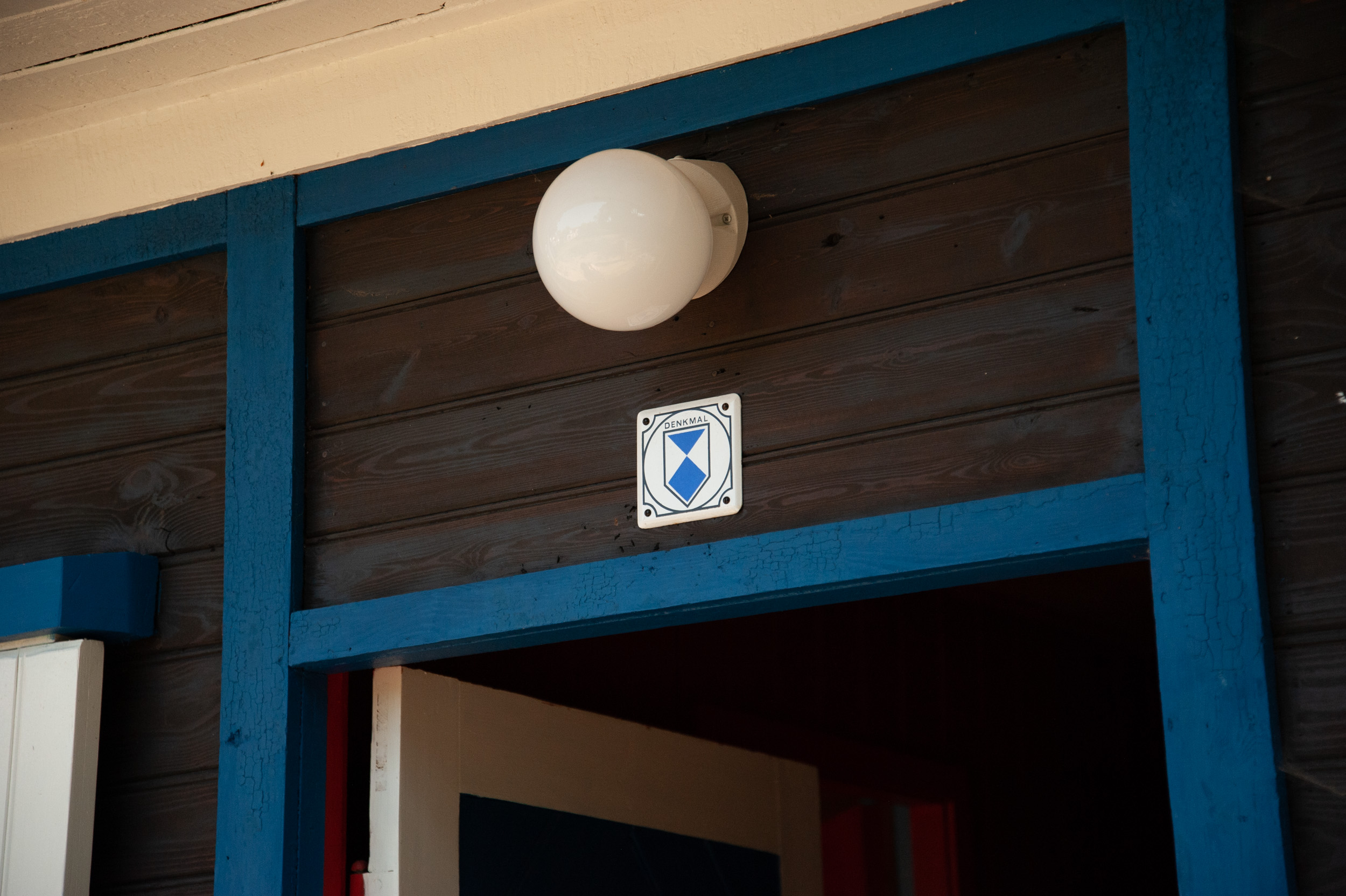
Back inside the house I stopped to get a quick photograph of the room that used to be the kitchen. Today it houses a sink and generator:
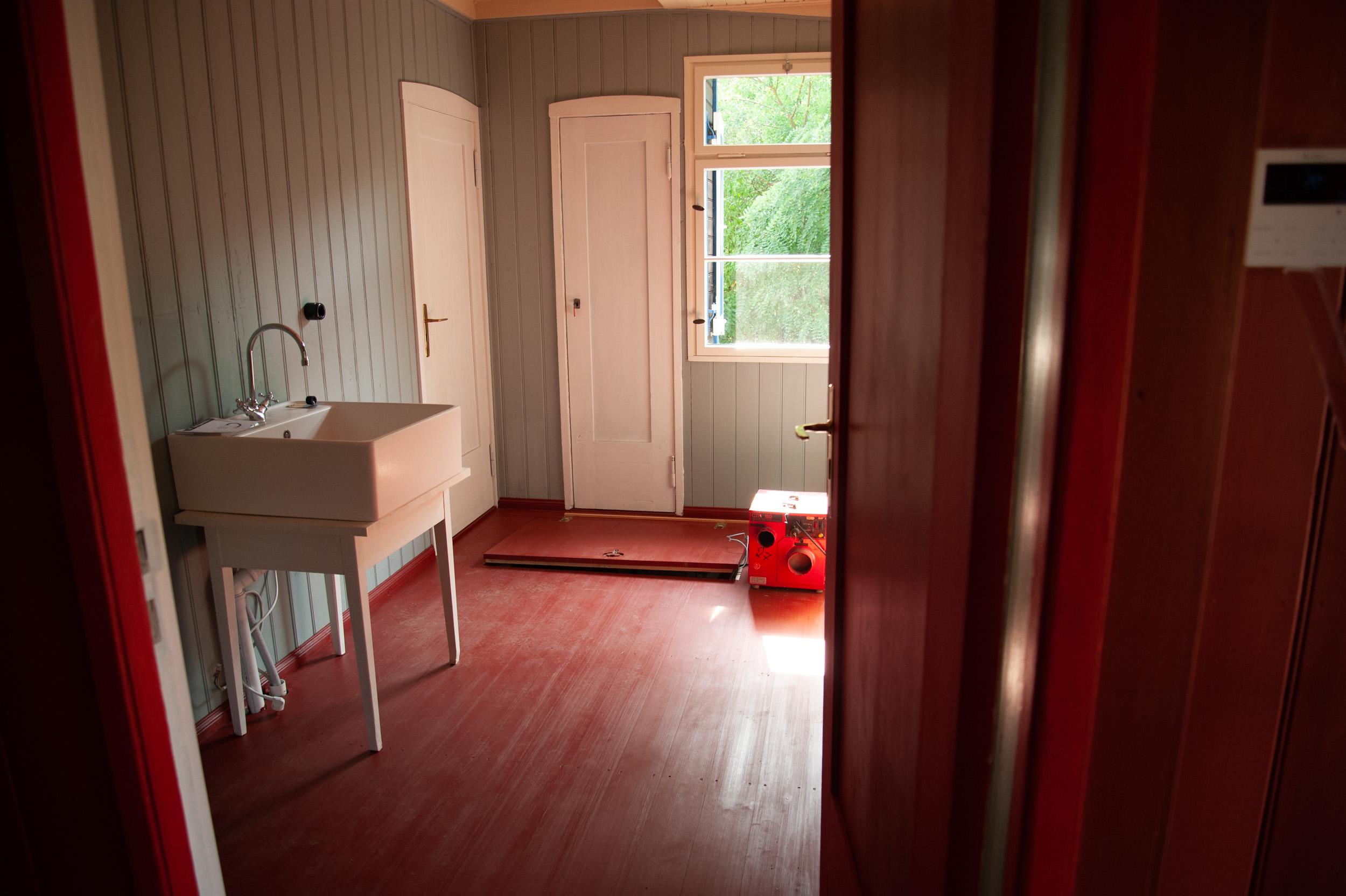
This is the hallway leading back from the front door towards the Living Room. The two men pictured, Dieter and Meinhard, were very kind and helpful during my visit:
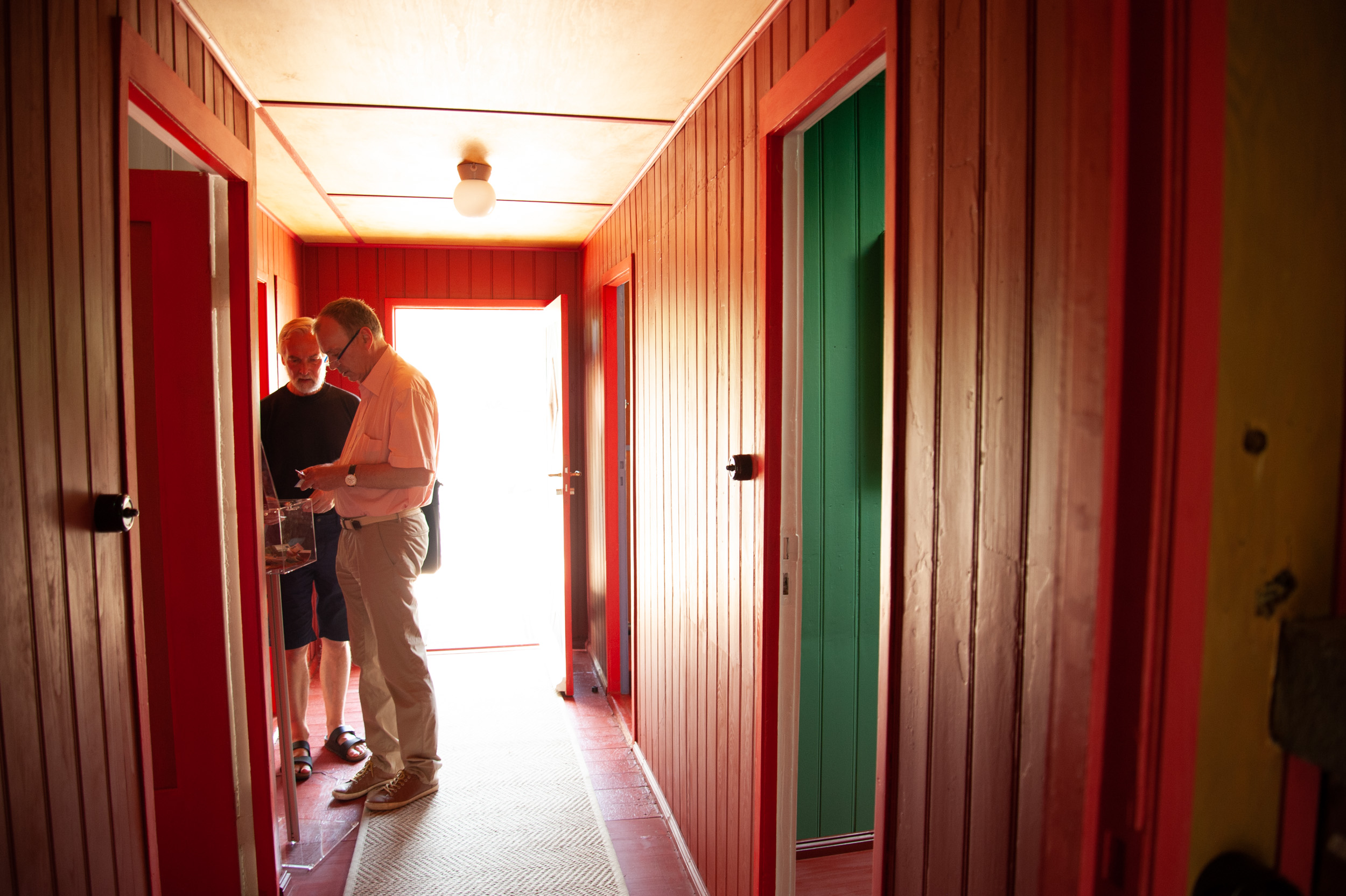
Across the hallway from the kitchen is the bathroom:
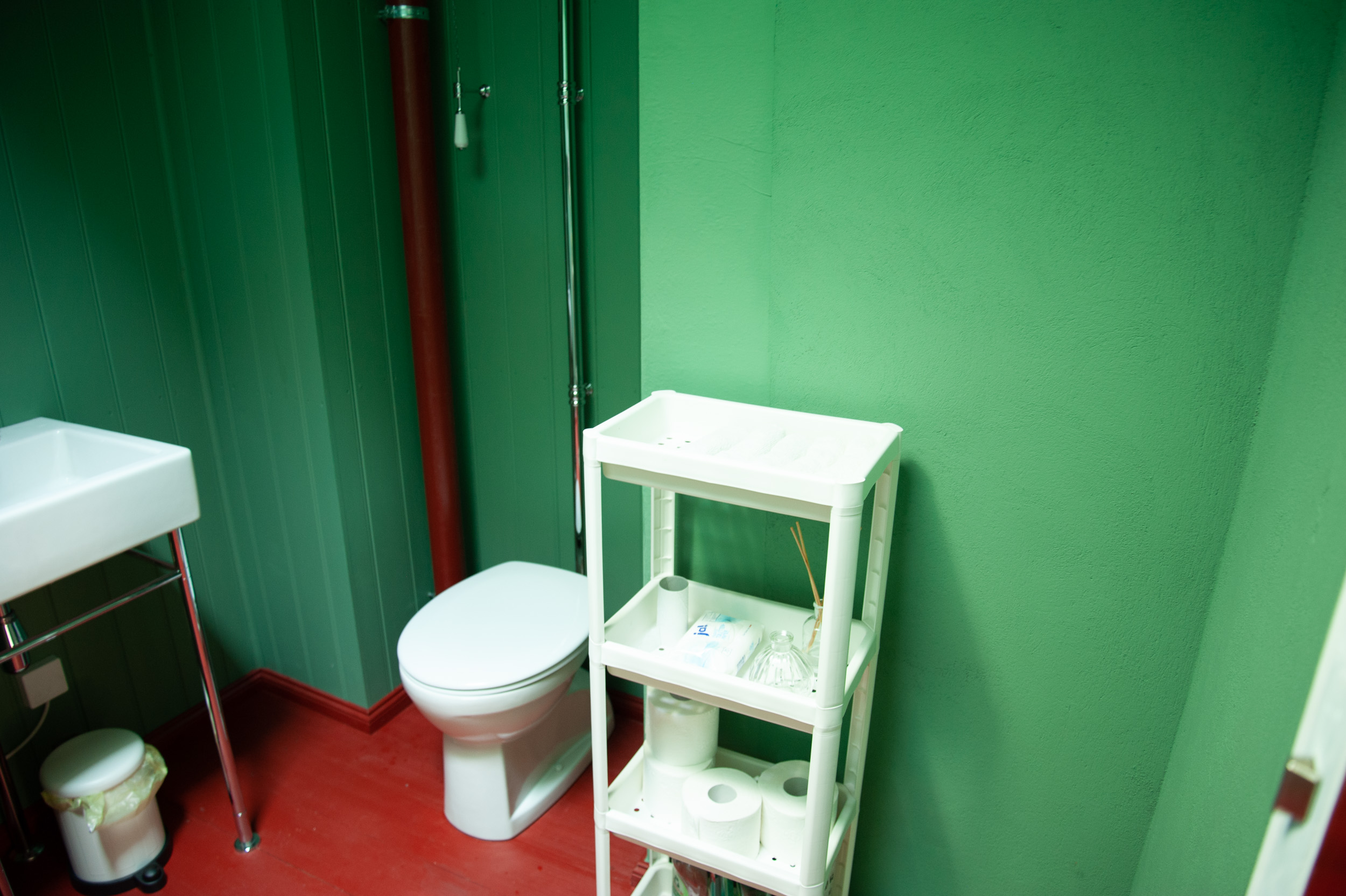
There was also a cabinet with some china that once belonged to the Kuhne family:
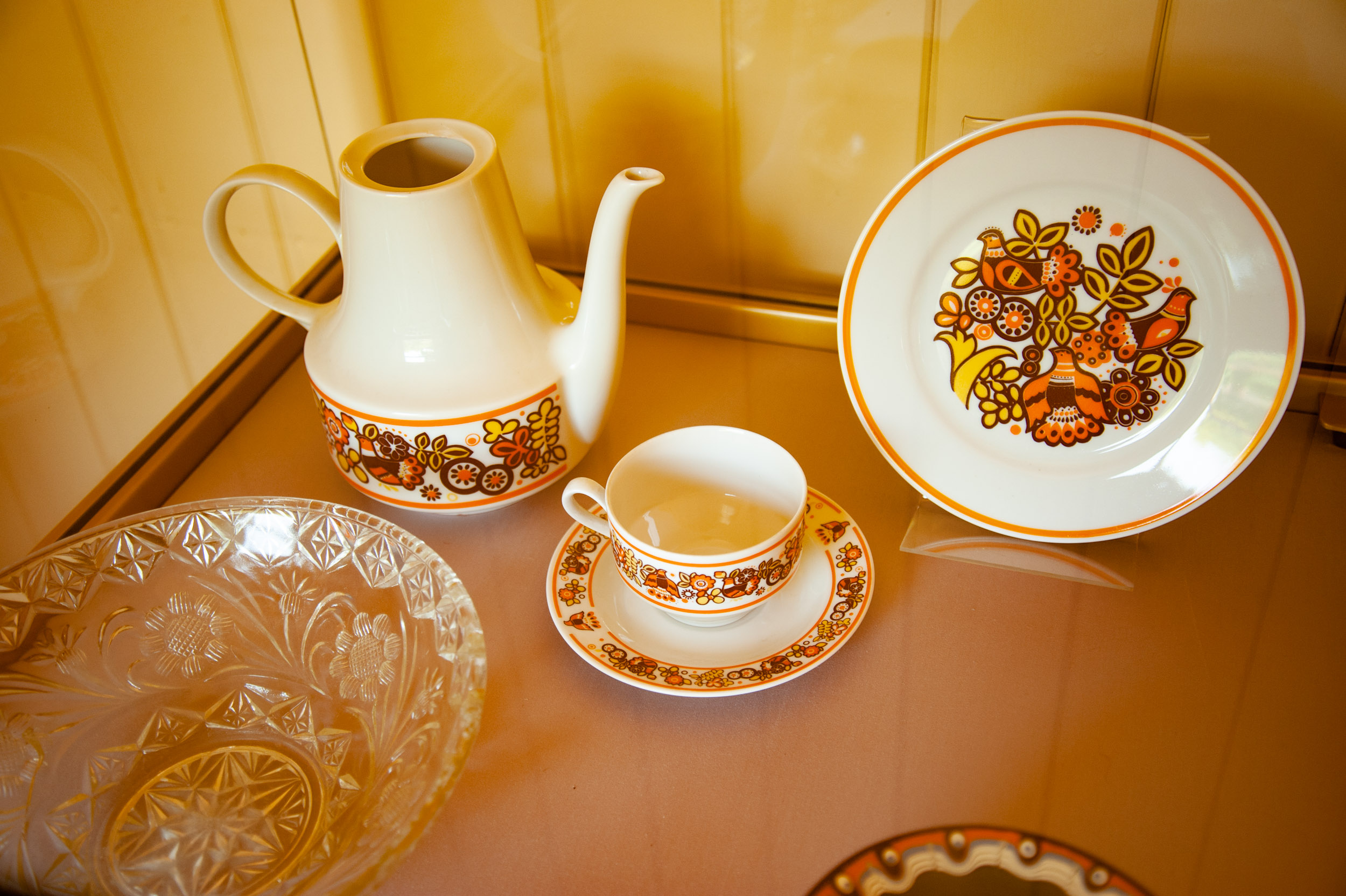
In the room that used to be the chauffer’s annex, there is a folder full of documents related to the history of the house itself. Here is a copy of some plans from when Dr Alexander was first building the house:
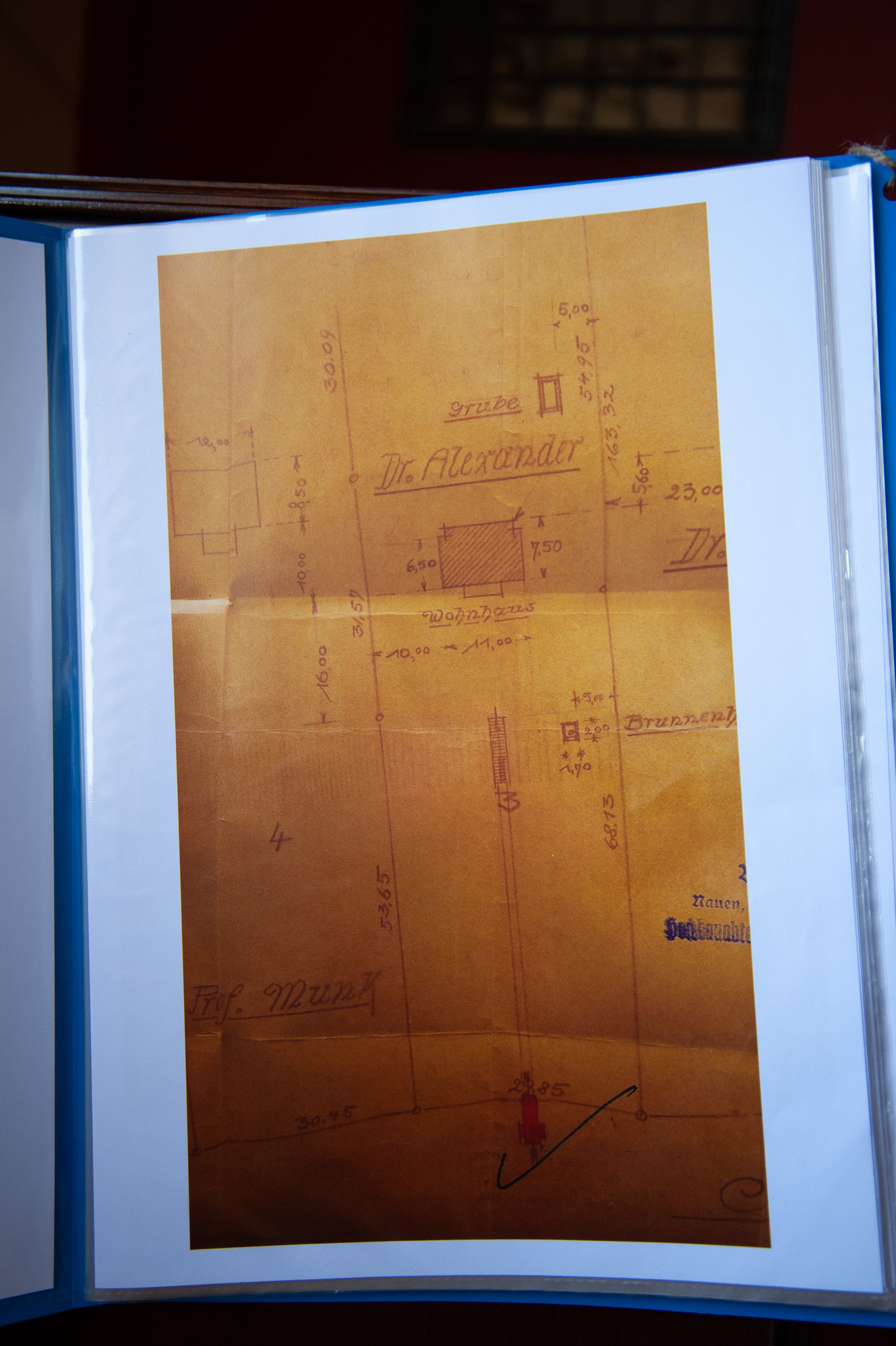
This set of plans bears a DDR stamp:
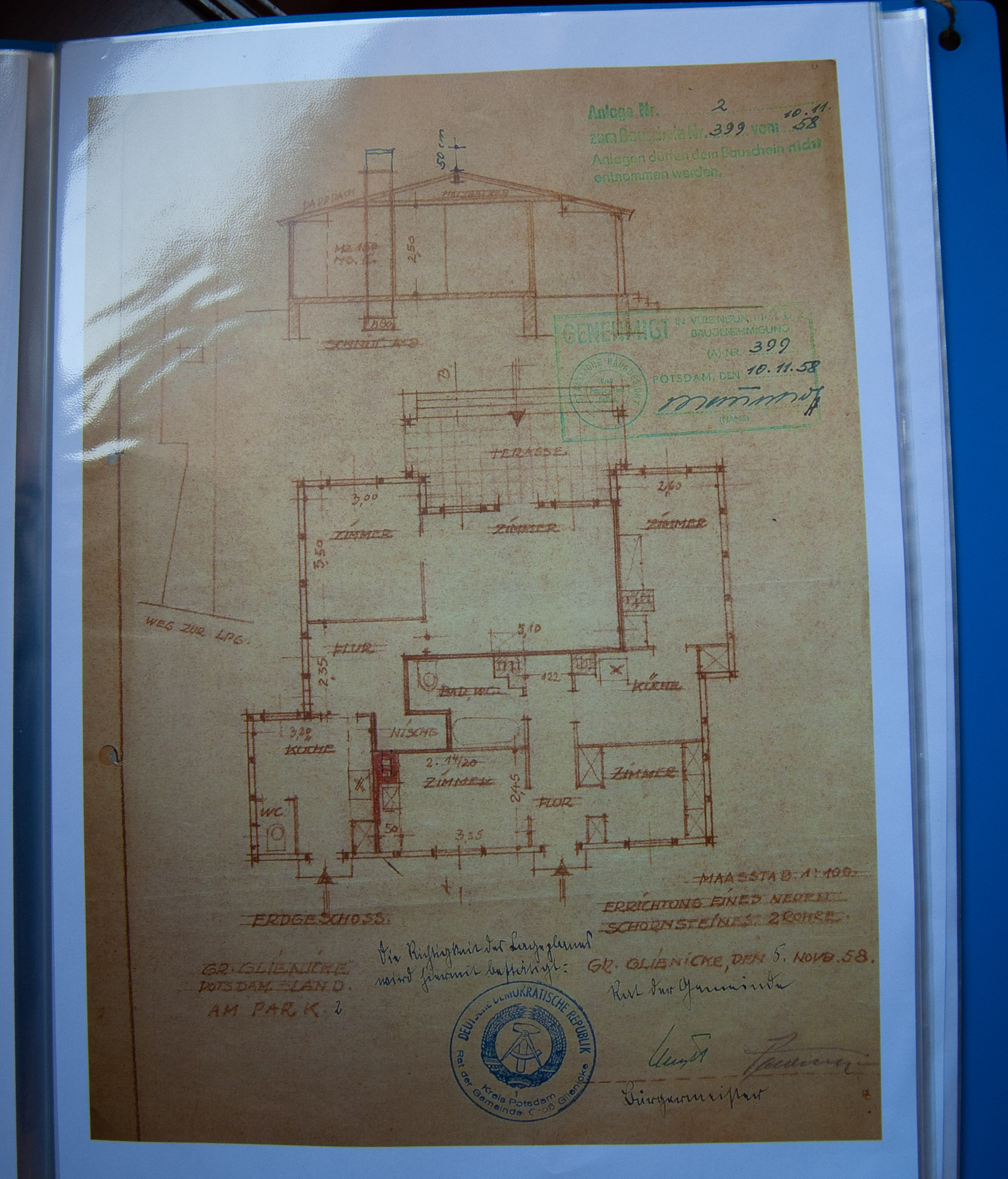
This is a view of the inside of the chauffer’s annex. A piece of East German wallpaper from the days of the DDR has been preserved:
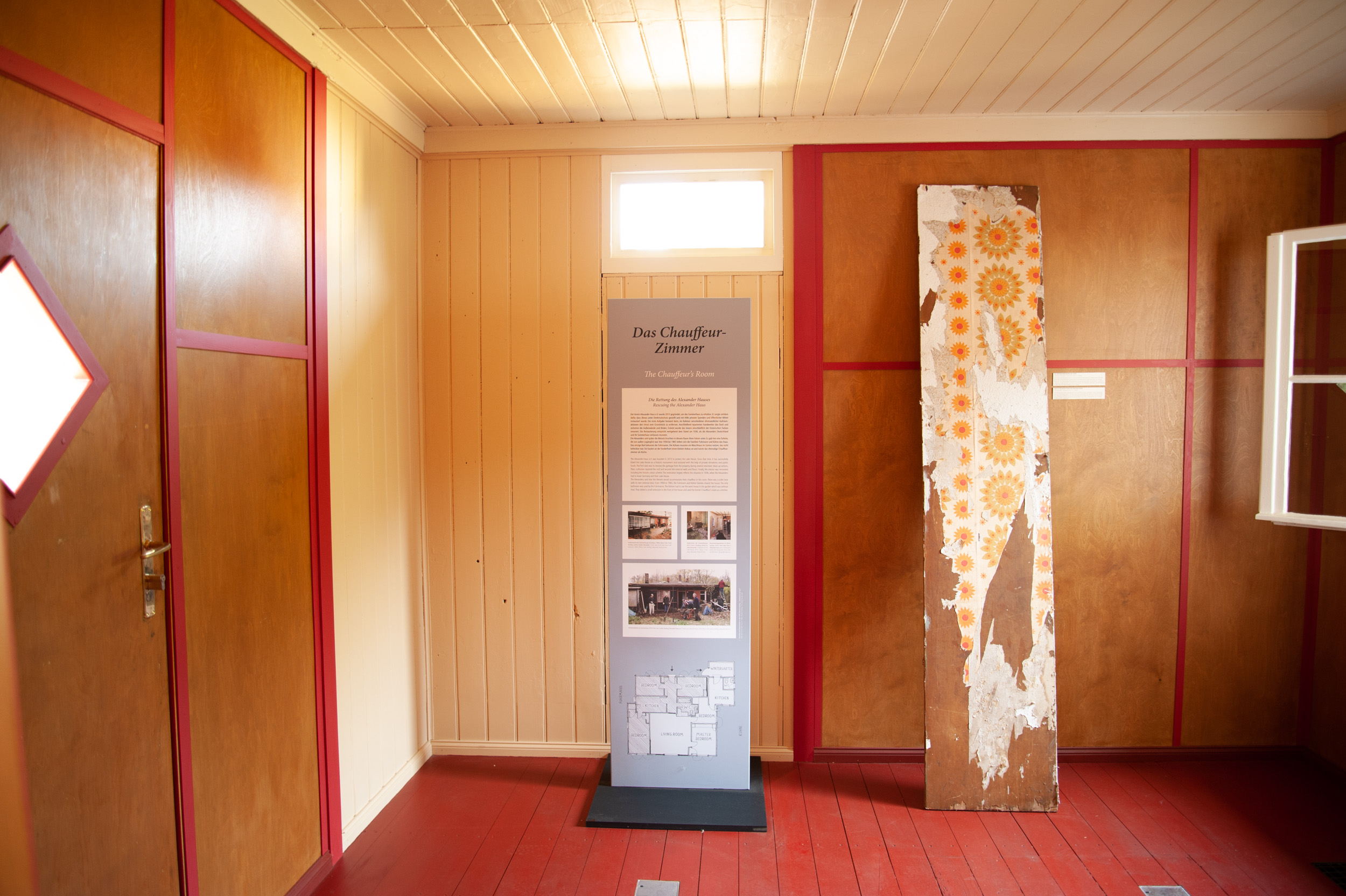
The small bedroom at the front of the house that used to be Roland’s room is now a small gift shop. There is a collection of books here as well as some pieces of the walkway tiles that led from the road to the house. I bought one of these to bring home as a unique souvenir of my visit to the house:
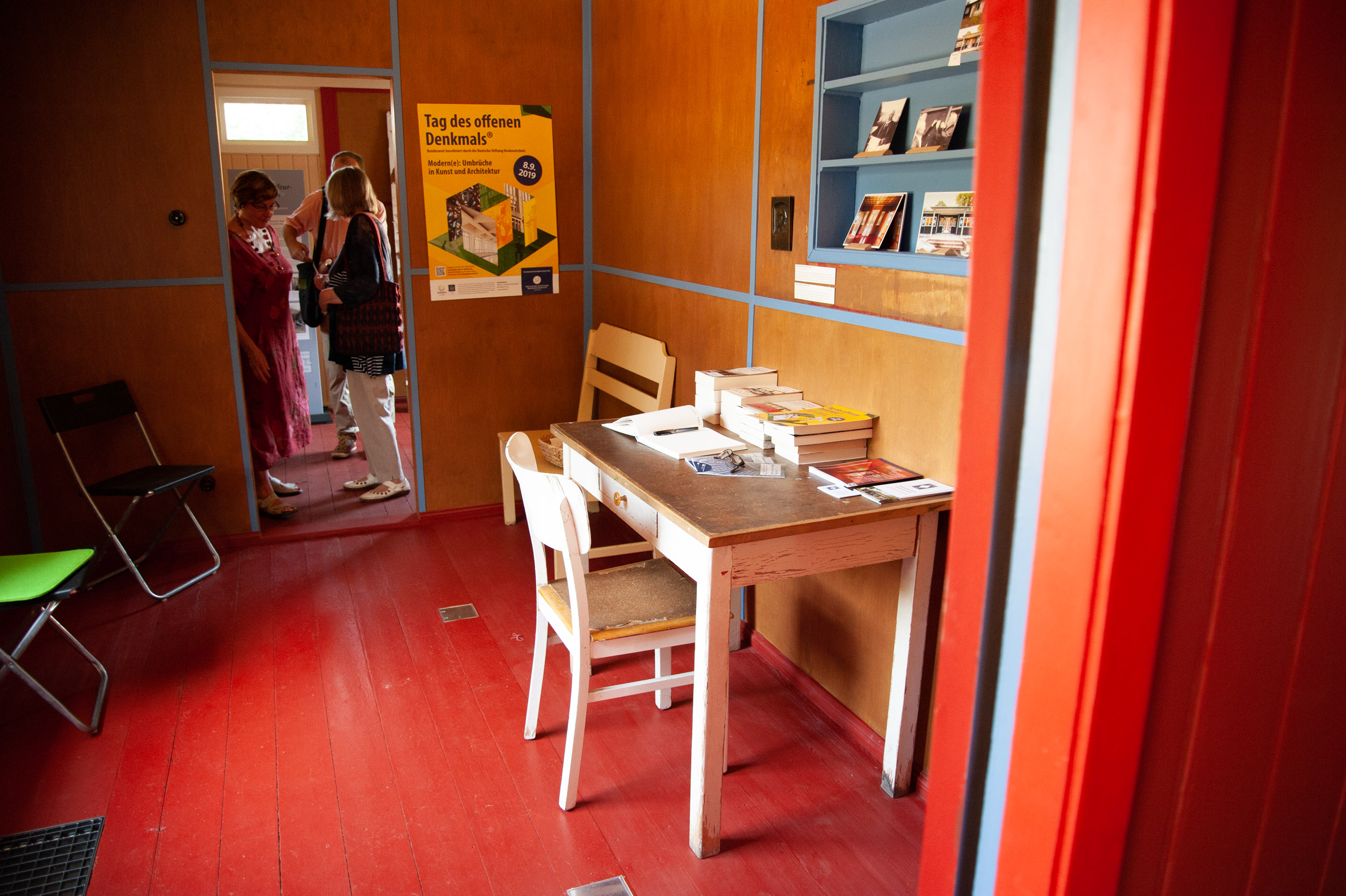
At this point it was time for the house to be closed. I was sorry to have to leave, but very glad to have taken the time to visit. As I made my way back to the bus stop, I passed this building which still bears the name of Otto von Wollank:
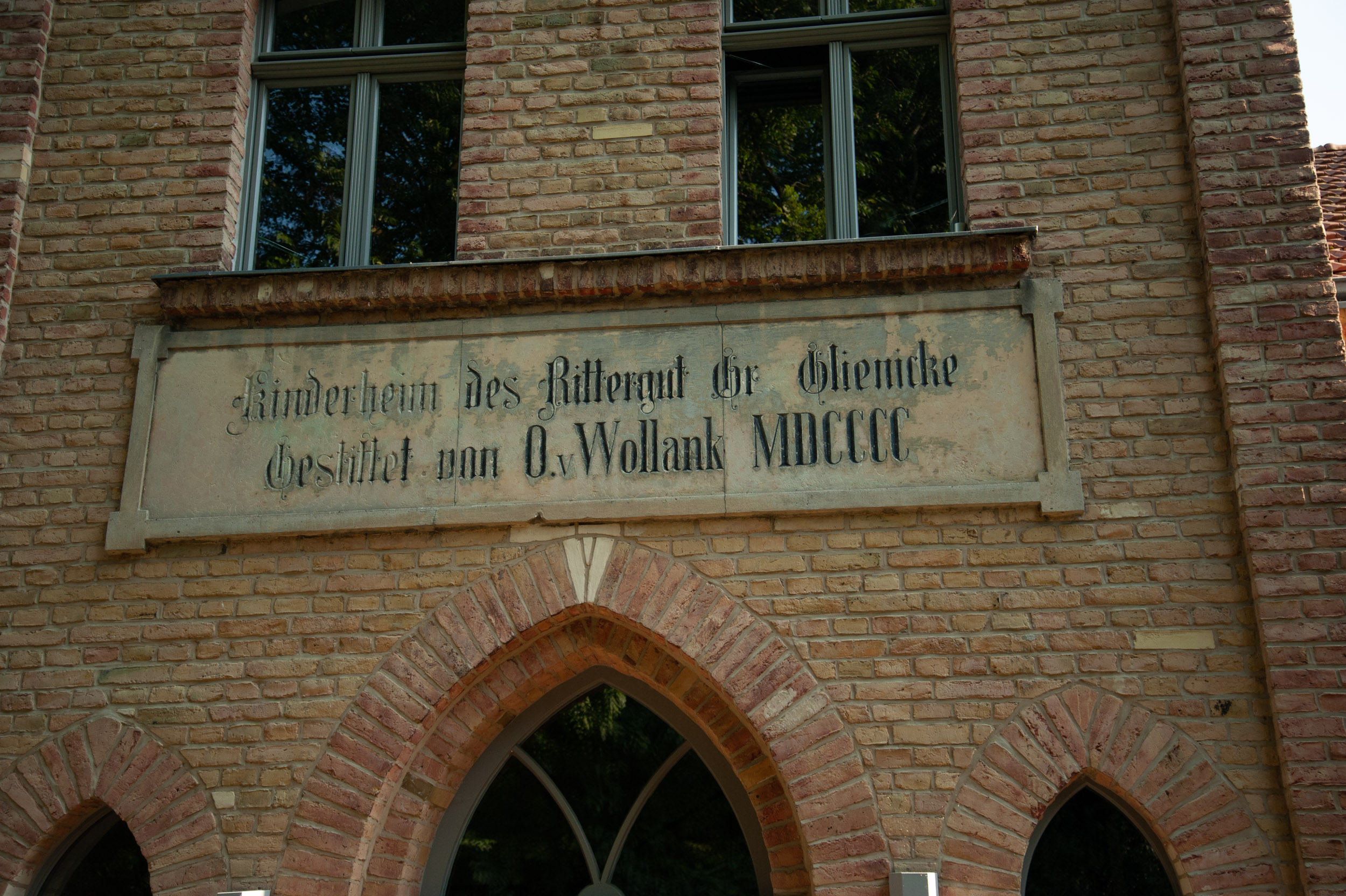
I also passed this section of the Berlin Wall, which bears the “Denkmal” plaque:
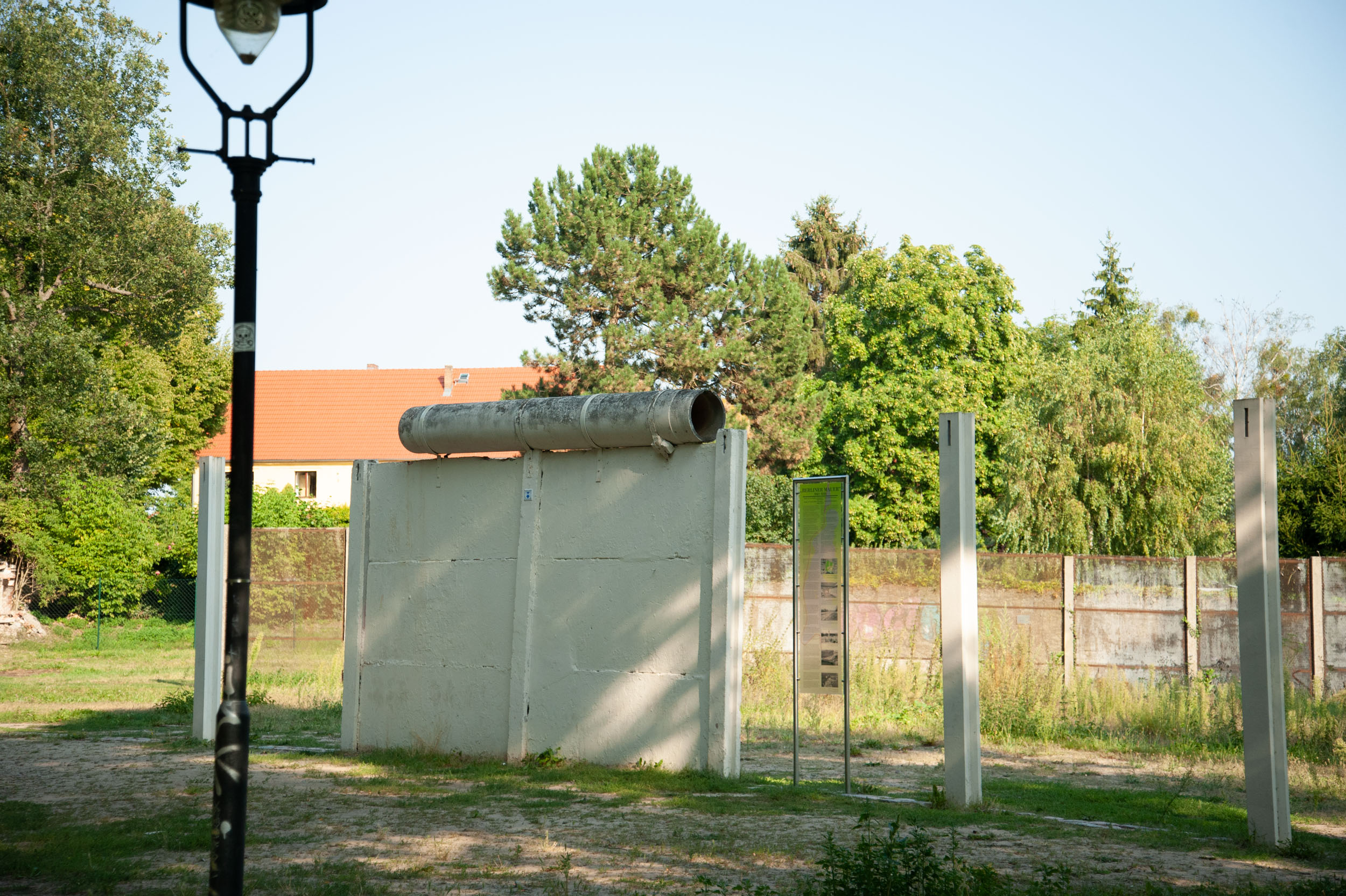
Today the original location of the wall is marked by this strip of pavers. I would continue to see these throughout my trip at different locations all over the city, reminding all who pass of the division that once existed in this city:
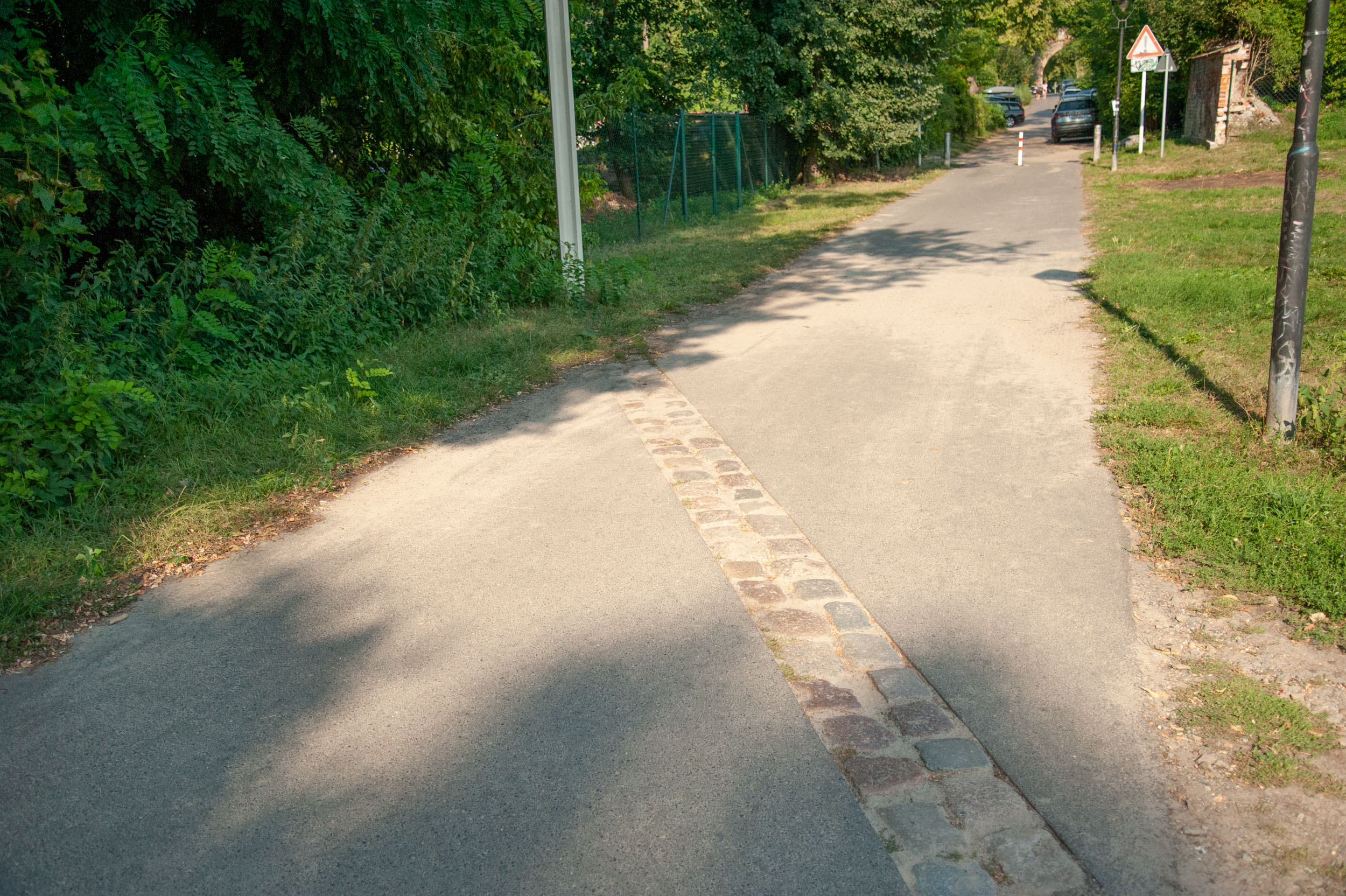
At this point it was time to get on the bus and start the hour-long journey back to the hotel for dinner. Tomorrow morning I would meet the rest of the tour group and see several museums, as well as some of the most important landmarks in central Berlin. Check back soon for Day 2!
